

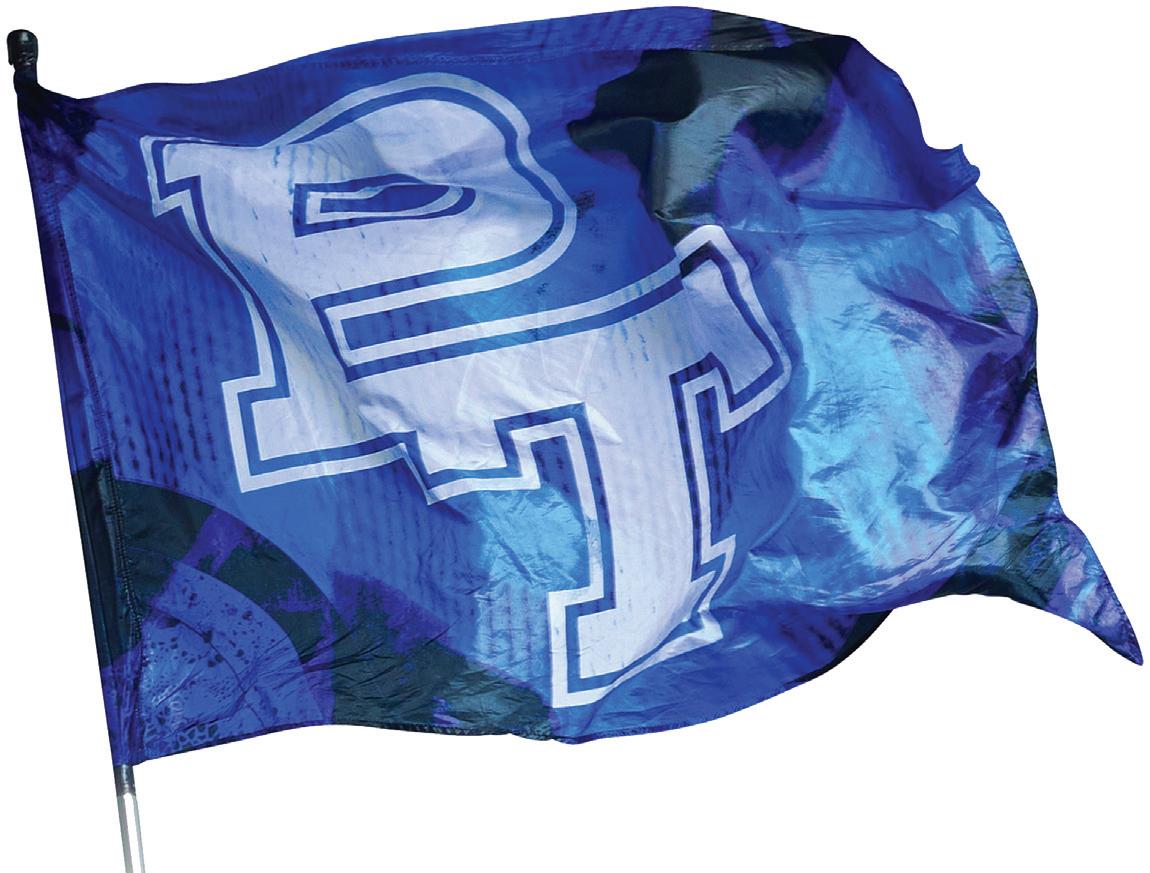
OCTOBER/NOVEMBER 2023 • $ 2. 9 5
BAND BLUE
19282023 of







Proof Living BaptistHealth.com Corbin | Floyd | Hardin | La Grange | Lexington | Louisville | Madisonville | Paducah | Richmond Bob is Retired and, as he says, “living large”. Treated for cancer at Baptist Health Paducah in 2018. 250335_BHPAD_LP_Bob_7_25x9_75.indd 1 9/11/23 12:58 PM
To find out why more people have chosen Baptist Health for treatment of breast, colon and lung cancer than any other health system in Kentucky and Southern Indiana, visit BaptistHealth.com/CancerCare.
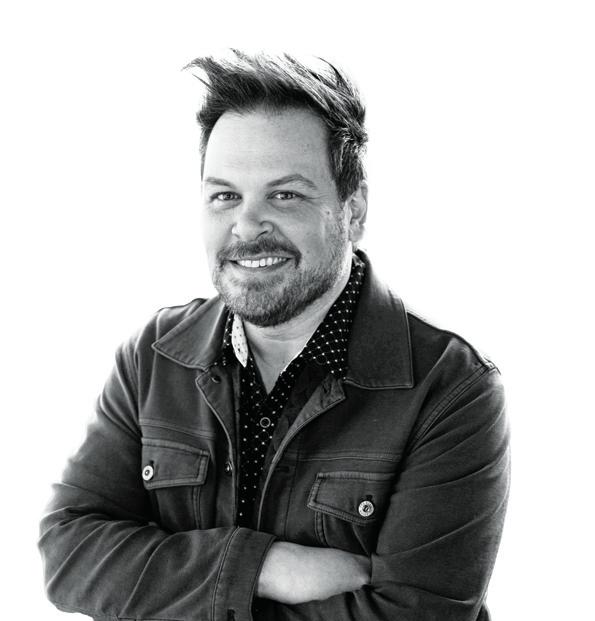


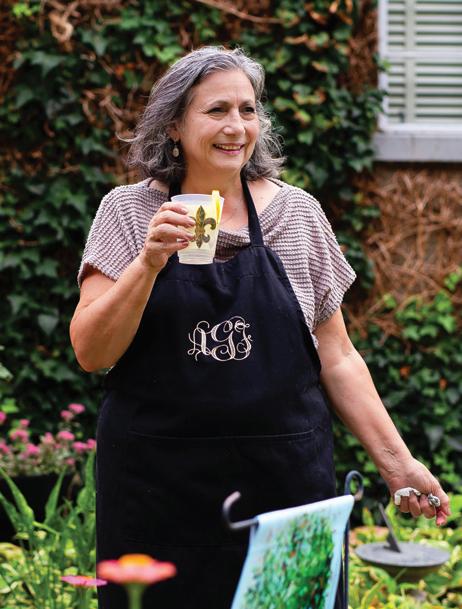

44 2 • PADUCAH LIFE Anita Granier Teaches A Culinary Class of Cultures 26 1968 Black Cheerleaders Faced Backlash At Tilghman 33 Negro League Quilt At Metropolitan Hotel 36 Governor’s Scholars Recall Their Experiences 41 Fencing Champion Foils The Competition 49 Diane Bay Authors Book About Her Famous Mother 52 The Dukes’ Key To Success Is Staying Busy 57 Local Protégé Of Boots Randolph 64 Vlach Brothers Attend Maritime Institute Visit us at paducahlife.com ★ SEE AND HEAR MORE OF THE FEATURES IN THIS ISSUE ON october/november 2023 ★ from the editor page 5 ★ last word page 68 contents 7PADUCAH TILGHMAN’S BAND OF BLUE 61 Mark Evitts Scores New Apple TV Series

Get more out of LIFE! There are so many ways to take part in LIFE in Paducah! Get MORE out of LIFE with Contact Darlene Mazzone at darlene@paducahlife.com. www.paducahlife.com Subscribe to our print edition. Follow us on Facebook and Instagram. Receive our weekly Around&About E-Features! 1 2 3 executive editor/ PUBLISHER Darlene M. Mazzone � associate EDITORS Stephanie Watson J.T. Crawford Amanda Hutchison Amy Clevidence � art DIRECTOR Scott McWilliams � associate art DIRECTOR Allison Wicker � editorial PHOTOGRAPHY Ginny Harris Max Arterburn � cover PHOTOGRAPHY Brad Rankin Photography � on the COVER Demmetria Donelson, Asher Griffith and Anakin Womble � Paducah Life is published six times a year for the Paducah area. All contents copyright 2023 by Mazzone Communications. Reproduction or use of the contents without written permission is prohibited. Comments written in this magazine are those of the authors and do not necessarily reflect the opinion of the ownership or management of Paducah Life Subscription rate is $29.95 for six issues. Subscription inquiries, all remittances and all advertising inquiries should be sent to Paducah Life, 2780 D New Holt Rd. #346, Paducah, KY 42001. Phone: (270) 556-1914. This magazine accepts no responsibility for unsolicited manuscripts, photography or artwork. All submissions may be edited for length, clarity and style. VOLUME 33, EDITION 5 OCTOBER/NOVEMBER 2023 • 3

It’s not just about offering one of the area’s largest selections of quality floor coverings from all the leading brands. It’s making sure you, the customer, are absolutely thrilled with the outcome of your choices. Come and see us today!— Greg
OPEN MONDAY THRU FRIDAY FROM 9 A.M. TO 5 P.M. SATURDAYS FROM 10 A.M. TO 2 P.M. ★ 5150 HEARTLAND DRIVE 270.443.1190 Integrity, Quality and Professional Service KALATY Exclusively in Paducah at Flooring America
Dillworth
N THE KEYBOARD OF AN ORNATELY SCULPTED UPRIGHT piano tucked into a corner of my tiny farmhouse, I labored over the requisite piano lesson scales I so desperately hated. Perched on a three-legged swivel stool that bored a hole in my bottom, I ran my seven-year-old fingers over the truly IVORY keys (as in the color as well as the compound) every afternoon after school. Now don’t get me wrong, I wanted to PLAY the piano. I wanted to play SONGS on the piano. I did not particularly want to perform the necessary daily drudgery of what was required to meet that ambitious goal.

But I come from a musical mother whose family consisted of quartets and trios and keyboardists so there was an expectation that was to be fulfilled. And despite those late afternoons wishing I could be outside on my swing rather than plunking the keys of my grandmother’s most cherished piece of furniture, I, too, realized early on that I loved making music.
I feel sure most musicians do it for the love of it. But there are also some verifiable reasons that arts and music should be part of every child’s educational curriculum. Studies show that students who take four years of arts education have an average SAT score that is 98 points higher than those who took half a year or less. Elementary schools with art programs show a 23% increase in math scores and a 15% increase in reading scores. These stats are a powerful testament to the positive impact art education can have on students’ academic performance. Not only that, similar studies show that 46% of youth who participated in the arts for two hours a week were less likely to engage in risky behavior. This is a striking reminder of the importance of art education in not only supporting academic success but also in shaping the lives of young people and keeping them safe.
From the second grade through high school, I parlayed the scales into ultimate performances for my high school and church choirs as well as other community affairs where I could bring the magic of music alive. And though it may sound a tiny bit macabre, my teenage job was to provide organ music for the local funeral home. To be honest, it was a very meaningful way for me to provide some small element of solace to families I generally knew since I grew up in a town of about 300 people. So, it was less of a job and more of a personal contribution to friends and family.
Music moves us. It brings us to tears. It makes us feel joyful. It encourages toe-tapping and fingersnapping. It colors our world in a way nothing else really can. And hey, it even makes us smarter!
I, for one, want the days of my LIFE to be filled with the sound of music.
Darlene M. Mazzone

OCTOBER/NOVEMBER 2023 • 5
★ from the E DITOR
darlene@paducahlife.com

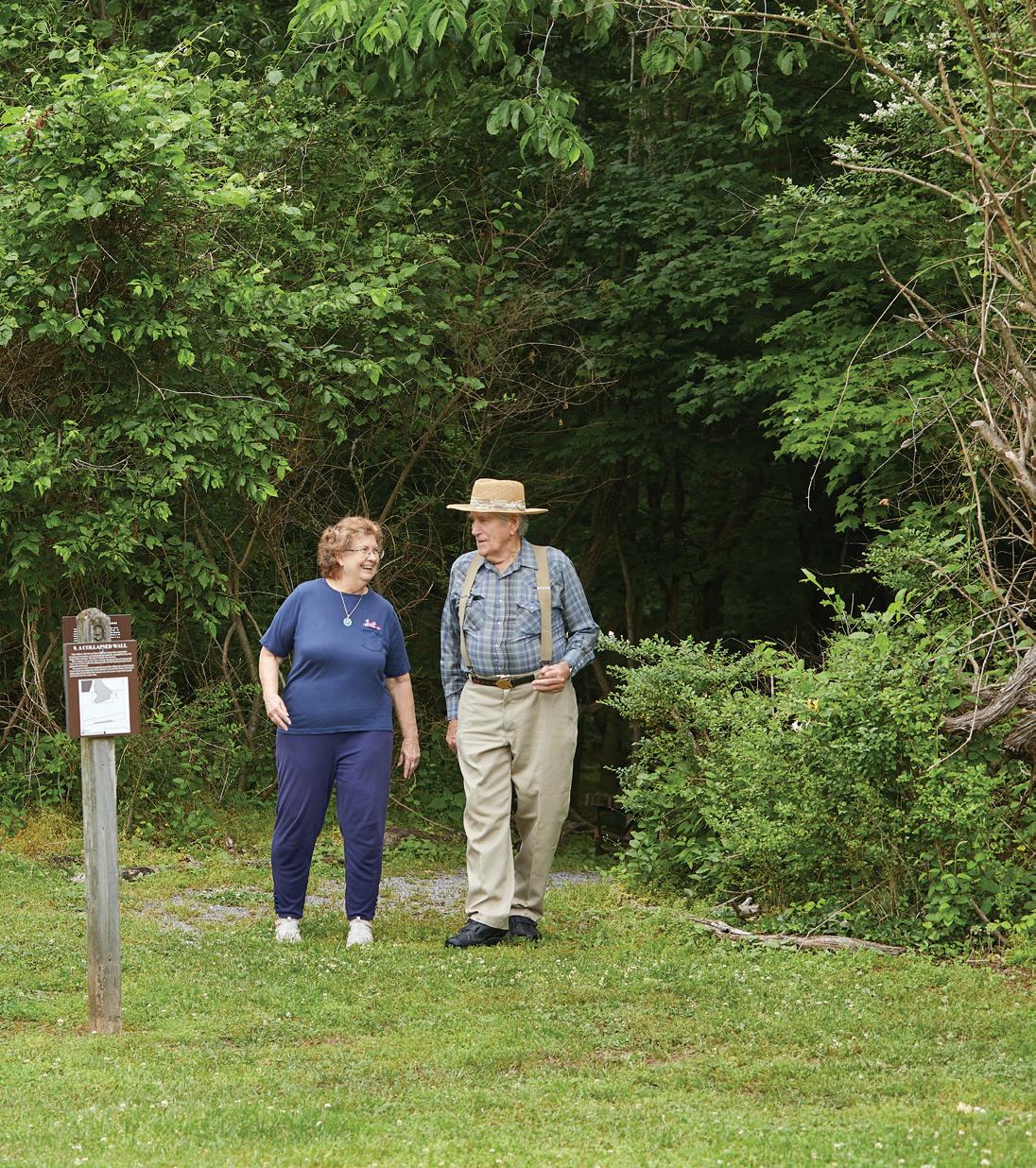
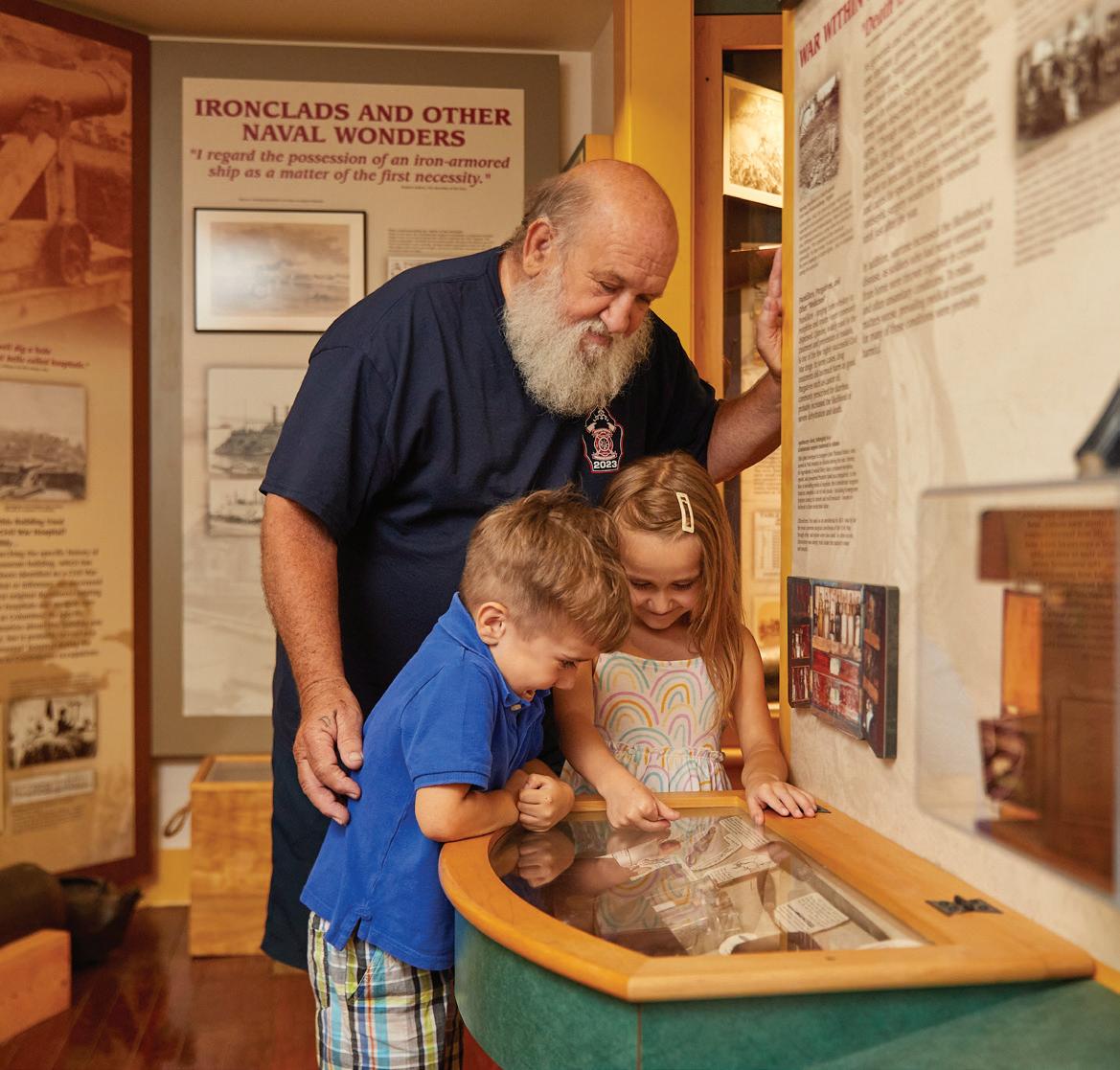



IN 1928,PADUCAH TILGHMAN’S first band director, Jack Dameron, was quoted as saying that one of his greatest successes was “modeling that blue and white uniform”— a Tilghman blue tradition still being carried out on the field by 21st century band members.
 by D ARLENE MAZZONE
by D ARLENE MAZZONE




★
7
BAND ofBLUE
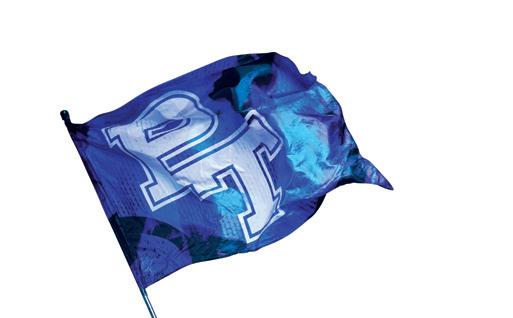
ADUCAH LIFE MAGAZINE HAS, ON SEVERAL OCCASIONS, REGALED THE HISTORY of Paducah Tilghman’s sports achievements since the school’s early years a little more than a century ago. Those stories have been many and varied and have encompassed almost every athletic endeavor played out on tracks and fields and in gymnasiums. But we have never “tooted Tilghman’s horn” with regard to the high-achieving Band of Blue. Under the direction of Jack Dameron, a “fascinating rhythm” was established in 1928 per the commentary in the school’s 15th Anniversary souvenir booklet. Mr. Dameron was the band’s first director. He hailed from Springfield, Missouri following his graduation from the Cincinnati Conservatory of Music. Mr. Dameron was quoted as saying that one of his greatest successes was “modeling that blue and white uniform”— a Tilghman blue tradition still

8 • PADUCAH LIFE P
being carried out on the field by 21st century band members.
Leaders of the Band of Blue include Lindsey Williams, Chris Loe and James Gregory.

It seems a testament to individual dedication that there have only been 14 band directors in the 95-year history of the Paducah Tilghman Band, exemplified by several musical maestros who served the talented team of musicians for more than a decade. However, none was more dedicated that Floyd V. Burt, who served on a scale unequaled by his successors.

Likewise, through the years, thousands of students took up their instruments and eloquently executed both musical prowess and precise movements as they performed both on the field, in the streets, and on the stage as a proud part of the noted Band of Blue. There are obviously SO MANY more stories than we have space and time to tell, but we hope this glance through even a small window into the past will make your heart sing.

OCTOBER/NOVEMBER 2023 • 9
Photo Courtesy Tera Martin
BAND ofBLUE

The Inspired Leadership of
FLOYD VINCENT BURT

FLOYD BURT WAS TAUGHT TO PLAY THE violin as a young Indiana farm boy. At the age of ten, he was invited to play in a high school orchestra. In 1930, Burt graduated with a degree from Indiana’s Ball State University. Already, he had five years of diversified work experience: musician in a silent film theater; member of the Ball State orchestra; membership in a three-piece band that played for dinner parties; playing violin on a daily radio show; serving as a theater assistant manager; and performing for vaudeville shows. His next opportunity would bring him to the shores
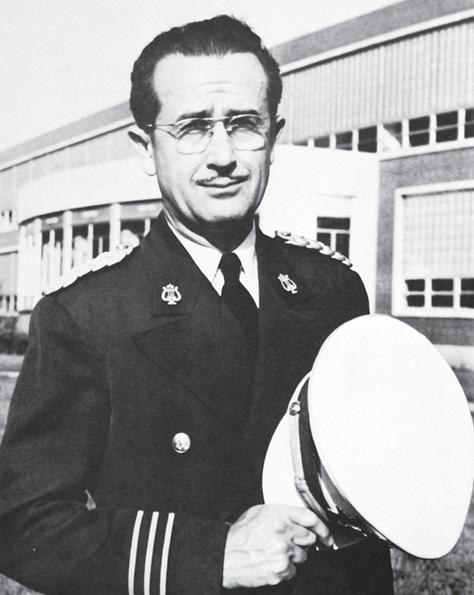




of the Ohio to start a tradition that would last a century. In a Sun-Democrat article in 1960, journalist Bill Powell described the details and impressions of the trip into Paducah.

“He arrived in his Dad’s Chevy on a pretty fall night. He crossed the ferry at Metropolis and hit the narrow gravel road, snaking up through the riverside trees and over some ornate concrete bridges into town. He saw the lights on top of the Columbia Theater.” Floyd would later recall that the lights on Broadway were viewed as a friendly handshake. “I fell in love with Paducah. I thought it was a wonderful place,” Floyd said.
Superintendent Hannifan interviewed Mr. Burt in the board offices at the Citizen’s Bank building and offered him the job. Upon meeting Floyd Burt, principal Walter Jetton commented of his first impression: “How can that small little man with a moustache who plays the fiddle become a band
10 • PADUCAH LIFE
Left to Right: The 1933 Drum and Bugle Corps was directed by Lucy Jane Craycraft and was created as “an auxiliary unit of the band.” The drum majors were Sara Cashon and Anna Marie Nagel. The color guards were Marion Warden and Helen Cooley and the flag bearers were Jane Cave and Margaret McIntosh. / In 1960 Leslie Myers served as the leader of the PTHS majorettes and Bill Biggs served as the Drum Major. / Louis Walker, First Drum Major / The PTHS band traveled to many destinations to perform throughout its 95-year history including this appearance at the Cherry Blossom Festival in Washington, D.C. / The 1927-28 Augusta Tilghman band made its first public appearance on Thanksgiving day, 1927, during the Mayfield Tilghman game played in Paducah. According to the 15th anniversary
director?” Mr. Burt sported a small, “wispline” moustache fearing that without it he would appear younger than his students.
“What he lacked in stature, he made up for in ability,” commented Mrs. D.T. Cooper, a member of the English faculty. Her words would be prophetic. For the next four decades, Burt’s visible impact would be noted by both students and the community. “Not only did he bring a two-year-old Tilghman juvenile band to full maturity,” the article continues, “he sought to provide music to a relatively unschooled community in order that its citizens might enjoy and appreciate some sophisticated awareness of the best American music.”
Though known to be knotty enough to modify recalcitrant behavior when it surfaced, he was purposely courteous and genuinely genteel in his associations, the article notes. He always regarded his students as ladies and gentlemen, and he made every effort to offer kindness, understanding, and encouragement.
In 1945, a friend apparently commented that band directors often wear out in ten to twelve years. Fortunately for Augusta Tilghman, Mr. Burt ignored his friend’s counsel and proceeded with a renewed vigor for 25 more years at the helm of the Band of Blue.
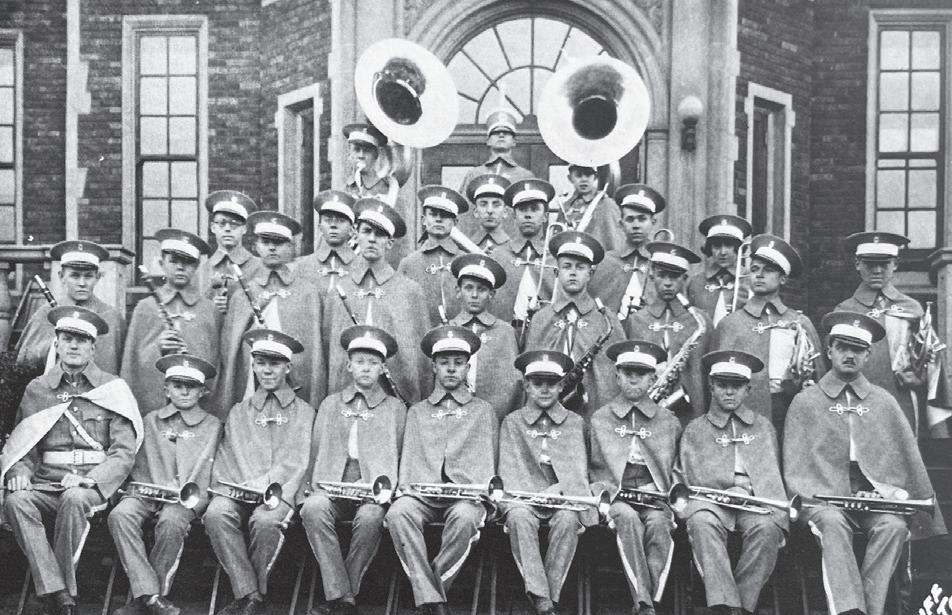


Countless people, living in all parts of the world, wrote the anniversary article’s author, consider themselves blessed to have experienced their individual association with Floyd Vincent Burt.
DIRECTORS THROUGH THE YEARS
AUGUSTA TILGHMAN / PADUCAH TILGHMAN
Jack Dameron
1928-1930
Floyd Burt
1930-1943
Paul C. Baker

1943-1945
Floyd Burt
1945-1961

Roger Richmuth
1951-1965
Al Farrell
1965-1970
T. Jack Henry
1970-1975
Phil Shelton
1975-1976
Doug Van Fleet
1976-1992
Art Davis
1992-1998
Don Martin
1998-2000
Bart Dixon
2000-2005
Patrick Saddler
2005-2015
James O. Gregory
2015-Present
booklet, the Mayfield band took the field “arrayed in bright ad shining uniforms. Mr. Dameron, undaunted by this display, took his 29 prodigies onto the field and pranced proudly in the wake of the Mayfield organization. Thus their first public appearance was made in blue shirt sleeves, black coats, and red neckties. Motivated into action by the contrast, the Tilghman PTA procured in the spring of 1928 the uniforms consisting of a blue sweater, blue trousers, and a blue and white cape, which lasted until the fall of 1935, when our present snappy outfits were obtained.”
“I have never been in a place in which the musical talent is so highly developed,” declared Mr. Burt on his first interview in the summer of 1930 with regard to the Augusta Tilghman band members.
BAND ofBLUE


PLAYING FORWARD it
by D ARLENE M AZZONE
ON A CRISP, FALL EVENING AS THE football season was getting underway all across Kentucky, James O. Gregory was playing in his front yard after a day in class at the local elementary school. The Muhlenberg Central High School sat just across the road from his home and on many such evenings James could hear the booming bass of the tubas and the staccato notes of the trumpets. He could also hear the voice of the high school band director.

“I can remember sometimes going in to tell my mom that I didn’t think the band kids were doing a very good job because the director was yelling at them,” he says with a chuckle. This statement by young James Gregory would become a self-fulfilling prophecy—not that we think Mr. Gregory EVER yells at his musicians.
So, after listening to the band practice and perform day and night from his formative vantage point, James decided to step up to the music stand in fifth grade. “For years I had listened in on the high school students putting in the hard work of becoming a marching band. I had seen the bands in the holiday parades and at other community events. At some point I think I just liked
12 • PADUCAH LIFE
James Gregory is a man with a tuba and a tenacious commitment to making music meaningful


OCTOBER/NOVEMBER 2023 • 13
BAND ofBLUE ★ JAMES GREGORY
the idea of being in the band,” James remembers. Consequently, as James puts it, in fifth grade he became a very bad trumpet player. But that gig didn’t last too long. Soon the band needed a baritone player so he transitioned to that instrument before ultimately finding his love of the tuba during his eighth-grade year. “The director came to me and said he really needed a tuba player,” says James. “He put the horn in my hand and the rest is history.”
James Gregory is a statuesque man of six feet, so it comes as no surprise that he was also successful at playing not only the tuba, but also football, baseball, and basketball. And though successful on the field and on the court in high school, the sounds emanating from that practice field near his childhood home kept wafting back into his psyche.
“When I started thinking about college, I started thinking about the reality of being hit by a 300-pound MAN on the football field. I was a decent basketball player, but I really needed to hone my skills to be competitive on a college court. And the thought of someone throwing a 95-mileper-hour baseball at me, was just frightening. So, the decision became music.”
But before James left Greenwood High School for his college career, a serendipity visit brought his future into focus.
Cindy Allen was James’s high school science teacher when he was a junior. After the loss of a basketball game one night, she invited James and a couple of friends to join her and her family for a visit and to shake off the disappointment.
“I walked into their house and her dad had his back to the door so I didn’t really see him until I walked into the room and when I did, THERE in front of me was one of the most respected band directors in the state at the time. His name was Joe Allen, and I was in shock and awe. I couldn’t believe HE was Miss Allen’s father! I bet I didn’t say ten words that whole night,” James recalls with wide eyes to this day. “I was in the presence of greatness.”
As it turns out, Joe Allen was the very band director
that James had witnessed working his magic on the football field as he led the Muhlenberg Central band when James was a little boy. The stars began to align, the music began to play in James Gregory’s ears, and the view from that point forward was to follow in his mentor’s footsteps and become the leader of the band— make that bands.


“After that night we immediately started a relationship that lasted until Joe’s death last year,” James says. “He said he would share with me everything he had learned about how to create a successful marching band. And he did just that. He made it clear that I would have to roll up my sleeves, get into the trenches, and work hard. But he said that if that was what I really wanted, he would support me all along the way. And he absolutely did.”
James took this charge seriously and worked his way through the music program at Western Kentucky University, and then after graduation James went on to serve in a variety of director positions in Hopkinsville and Owensboro before accepting the baton to direct the Band of Blue nine years ago.
“Music changes people,” James says. “I’ve seen it happen on many occasions. The students who stay with it and really embrace the challenges see the gratification later on. Sometimes they don’t see it in the beginning. But eventually they look back on the moments and the memories and the camaraderie among this special group of people who ultimately become a close-knit unit and they see what it truly meant to them.”
What the role means to James Gregory, is that he is HERE for his students, his musicians, his band. “I want to be someone who is ready and willing to help in any way I can and to make their time in the band meaningful. I want to be truly available to my band members, just like Joe Allen was to me,” James comments.
James Gregory is a guy with a tuba and a teaching tenacity to truly “play it forward.”
14 • PADUCAH LIFE
The Band of Blue Captains and Section Leaders are from left Teriel Edwards, Levi Brown, Dwight Duffy, Terrance Robinson, Demmetria Donelson, Asher Griffith (Field Commander), Anakin Womble, Ryan Bidwell, Tessa Martin, Horace (H.G.) Page, and Hailey Greer.
Paducah Tilghman 35 Mayfield 28





PADUCAH LIFE Magazine was on the field in September when the Paducah Tilghman Tornado won their first game against Mayfield High school in 17 years! It was a night to remember and we’ve captured some of those memories here.
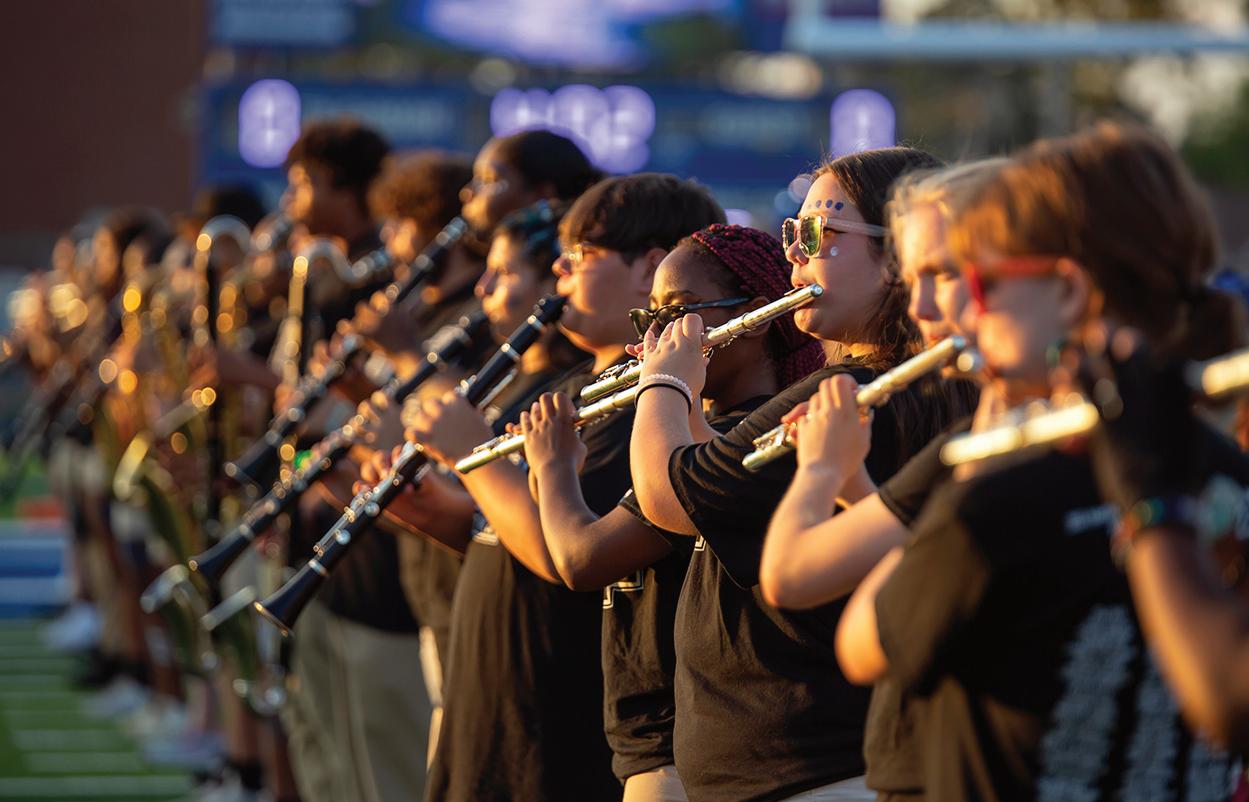


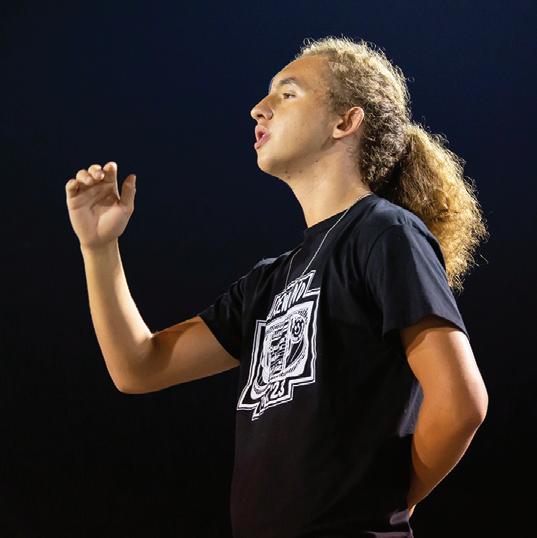



OCTOBER/NOVEMBER 2023 • 15
Photos by J.T. Crawford




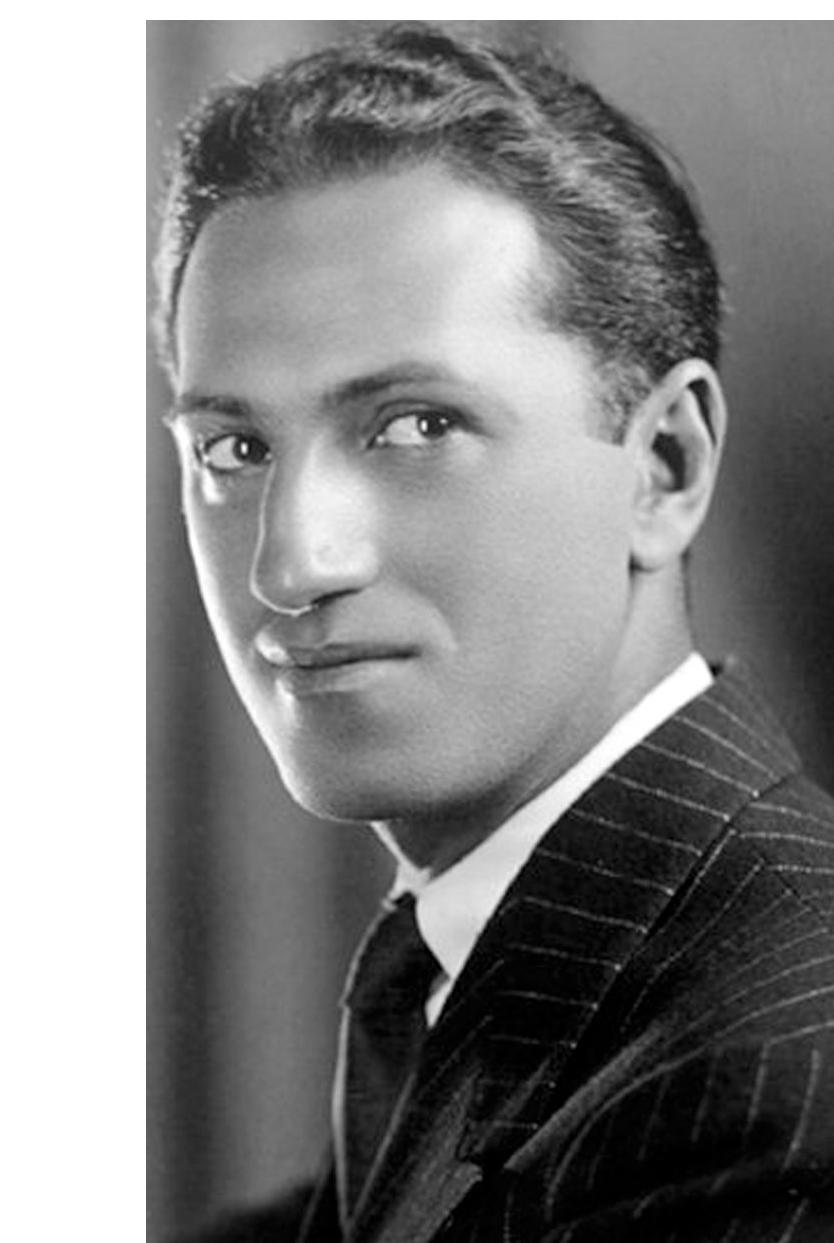

16 • PADUCAH LIFE be especially when they are in need of daily care. CARING PEOPLE SERVICES are just the people you are looking for if you are looking for quality care, conscientious individuals, and compassionate commitment. Professional Caregivers Non-Medical Services 24 Hours A Day ring peopleser vices.com (270) 575-4529 • • 1-800-383-7231 Proud member of Home Care Association of America WE’RE YOU W T rofessional Caregivers Non-Medical Services 24 Hours A Day CARING PEOPLE SERVICES HONORS CARING AND CAPABLE MEN AND WOMEN OF THE P www caring peopleser vices com (270) 575-4529 • • 1-800-383-7231 Proud member of Home Care Association of America WE’RE THE SOMEONE YOU WERE HOPING TO FIND. Professional Caregivers Non-Medical Services 24 Hours A Day CARING PEOPLE SERVICES HONORS THE CARING AND CAPABLE MEN AND WOMEN OF THE PADUCAH POLICE DEPARTMENT! is where the Caring is! Home 270-575-4529 • caringpeopleservices.com NOVEMBER 11, 2023 DECEMBER 9,2023 TICKETS AT PADUCAHSYMPHONY.ORG - 270.444.0065 THE PADUCAH SYMPHONY ORCHESTRA PRESENTS
COMPOSING A LIFELONG LOVE of MUSIC EDUCATION
Paducah Life Magazine Reflects on Doug Van Fleet’s Remarkable 60 Years of Dedicated Service as a Music Educator, and We Celebrate the Profound Impact He Has Had on Generations of Students

IN THE QUIET CORNERS OF BUTLER COUNTY, KENTUCKY, A MUSICAL JOURNEY UNFOLDED that would resonate across decades and touch countless lives. Doug Van Fleet, an unassuming young man in a rural community, had no inkling of the symphony destiny would compose for him. As we reflect on his remarkable 60 years of dedicated service as a music educator, we celebrate the profound impact he has had on generations of students, the legacy he leaves behind, and the melodies that continue to reverberate through his influence.
Doug's journey began in an era vastly different from today's fast-paced world. His first eight years of school were spent in a one-room schoolhouse. One morning during his sophomore year of high school his father said to him, “Son, you are going to join the band today.” Indeed that day he was called to the principal’s office where a band instructor took him to pick out his first instrument— the cornet.
During his senior year of high school, Doug’s father posed this question: “Son, what are your plans after high school?” Doug said he intended to enlist as a marine. “Nope,” his father replied. “You’re going to college, and you’re going to become a band director.” And with that, the score for Doug’s future life was composed.
Doug’s journey took him from humble beginnings to Western Kentucky University, where he honed his craft. After graduation in 1963, he began his first music teaching job in Allen County, Kentucky. In 1976 Doug made his way to

BAND ofBLUE ★ by A MY C LEVIDENCE
OCTOBER/NOVEMBER 2023 • 17
BAND ofBLUE ★ DOUG VAN VLEET

Paducah Tilghman High School where he taught music and directed the band and choir until 1992. He retired from the public school system that year to teach at St. Mary where he remained for 16 years before returning “home” to Paducah Tilghman in 2008, a position he maintained until this past school year.
Doug’s tenure as a music instructor was marked by triumphs that mirrored his unwavering dedication. His students soared under his guidance. In addition to winning countless local, regional, and state competitions, his Paducah students have performed before the Vatican, showcasing the universality of music’s language. His band played for a crowd of 72,000 at an Atlanta Falcons game, and his choir sang the national anthem at a Chicago White Sox game. He and his students were invited to perform twelve times at the prestigious Kentucky Music Education Association's National Conference, a testament to his exceptional talent and commitment to his students.
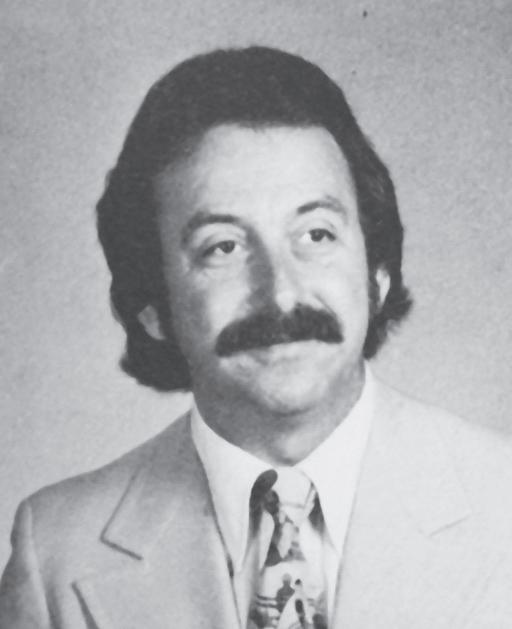
It’s not just the trophies or accolades that define Doug's impact, however. His legacy extends far beyond the stages and podiums. He is not only a teacher but a community builder. He laid the foundations for the Paducah Symphony Orchestra, coordinated Concerts in the Park, and founded the Paducah Community Band and the Paducah Concert Band among others. His unwavering passion for music education saw him teaching all three music programs—band, choir, and orchestra—making him a unique and treasured figure in the community.
And Doug’s impact is not just local, but global. He has imparted his wisdom to students worldwide, to even the most remote corners of the planet. In 2008 he traveled to Alaska to mentor a small group of students who took a ferry for 36 hours to play together just once for Doug. He was also recruited to teach a one-week summer program in the American School located in the bustling heart of Singapore. He has traveled many times throughout Europe having been invited to share his talents with symphony orchestras all across the globe.
Amidst all these achievements, Doug has remained true to his core philosophy: “People form habits. Habits form futures.” His unwavering belief in the power of habits and discipline to shape lives underscores his commitment to nurturing not just musicians but well-rounded individuals ready to face life's harmonies and dissonances.
Doug and his beloved wife, Mary Jane, will soon celebrate 40 years of marriage. The couple has three children: daughter Angie Fisk, and sons Dr. Joseph Van Fleet and Aaron Van Fleet. Of the three, Joseph chose to turn music into a career. Mary Jane recalled a story Joseph told at Doug’s WKU Music Wall of Fame induction ceremony.


“Joseph was so excited when the day came to pick his instrument for the middle school band. All the kids were to visit Mrs. Nancy Page’s class. In that room, all the instruments were laid out for the children, who went in one at a time to choose what they were going to play. Joseph waited anxiously for his turn to enter the room. Joseph got closer and closer to the door. Finally, it was his turn. When he was called to enter, Doug looked at him and said, ‘Joseph, you are going to play the trumpet. Get back to class.’” Joseph did as he was told, just as Doug had done with his own father. Doug might have marred his son’s day at middle school by choosing FOR him, but ultimately it was a choice that proved prophetic.
Today, Dr. Joseph Van Fleet, an accomplished trumpet player, has turned his father’s legacy into a melodious journey of his own. His rise to prominence in the music world, as a performer and professor at Eastern Kentucky University, is a testament to the guidance and inspiration he received from his dad. Two generations of Van Fleets now stand as living
18 • PADUCAH LIFE
Mary Jane and Doug Van Fleet
proof that a father's guidance, even in music selection, can shape a son’s destiny.

As Doug embarks on a welldeserved retirement, we honor his journey—a symphony of passion, dedication, and unwavering commitment to the art of music and the hearts of his students. Plans are underway for the Doug Van Fleet Studio which will be part of Paducah’s Dunlap project. Naming rights were secured by $10,000 in funding raised through individual
donations—a heartwarming testament to the community’s collective gratitude for Doug’s enduring contributions. In celebrating Doug Van Fleet’s life, we celebrate the beauty of a life lived in harmony with true purpose—a life that has composed melodies of inspiration and unity. The echoes of his teaching will continue to resound in the lives he’s touched, forever shaping the future of music and those who create it.


OCTOBER/NOVEMBER 2023 • 19
call 270.908.0006 freighthousefood.com always in season Around& About Sign up at paducahlife.com for our weekly eblasts and get MORE out of LIFE!
FOND MEMORIES and LASTING LESSONS
LaVira Anderson’s Journey With the Paducah Tilghman Band of Blue Was the Catalyst to a Successful Career
IN THE ANNALS OF HISTORY, CERTAIN EXPERIENCES STAND out as pivotal moments that shape a person’s character and future path. For LaVira Anderson, her years with the Paducah Tilghman High School Band of Blue from 1961 to 1964 were not just a chapter of her youth; they were the foundation upon which she built a lifetime of success and resilience.


LaVira’s journey with the band began when she first picked up the violin and joined the orchestra. That decision ultimately led her to the vibrant world of the marching band. Opting for the tenor drum, she embraced the rhythm and discipline that defined her role as the Row Captain. Responsible for ensuring the drum line’s precision and unity, LaVira took immense pride in upholding the highest standards of perfection.
Among her treasured memories were the sweltering days of summer band camps. From dawn till dusk, the band members endured grueling practice sessions under the scorching sun, learning cadences and perfecting show numbers for the upcoming season. While the hours were long and the work intense, the camaraderie and the sense of accomplishment forged bonds that lasted a lifetime. Through these experiences, LaVira and her fellow bandmates not only honed their musical talents but also cultivated life lessons of teamwork, dedication, and perseverance.
LaVira’s unwavering commitment to her craft and her skillful drumming quickly earned her respect among her peers. “My section members saw me as a drummer first and a girl second,” LaVira recalls of her leadership in a male-dominated section.
The Band of Blue, beyond being a musical ensemble, proved to be a school of life. LaVira’s transformative journey in the marching band taught her some essential skills—adaptability, flexibility, discipline, focus, and work ethic. These qualities would later serve her well in her remarkable career with a corporate railway company. She began her career as a stenographer with the Illinois Central Railroad. She worked for every deparatmenet at ICRR prior to its acquisition by the Paducah & Louisville Railway. She then joined P&L’s marketing department, a position she held until her retirement. Each day working for the railroad brought new challenges, and no two days were alike—a reminder of her days in the marching band.
LaVira’s story stands as a testament to the transformative power of arts and music in education. The Band of Blue wasn’t merely a stage for musical performances; it was a crucible of character, a forge of lifelong friendships, and a classroom of discipline. It nurtured a love for music while simultaneously instilling values that would shape the trajectory of one woman’s life. LaVira Anderson's journey is a resounding reminder that the arts, music, and the discipline fostered through extracurricular activities have the potential to cultivate qualities that lead to personal growth, career success, and a lasting impact.
20 • PADUCAH LIFE 20 • PADUCAH LIFE
BAND ofBLUE ★ by A MY C LEVIDENCE
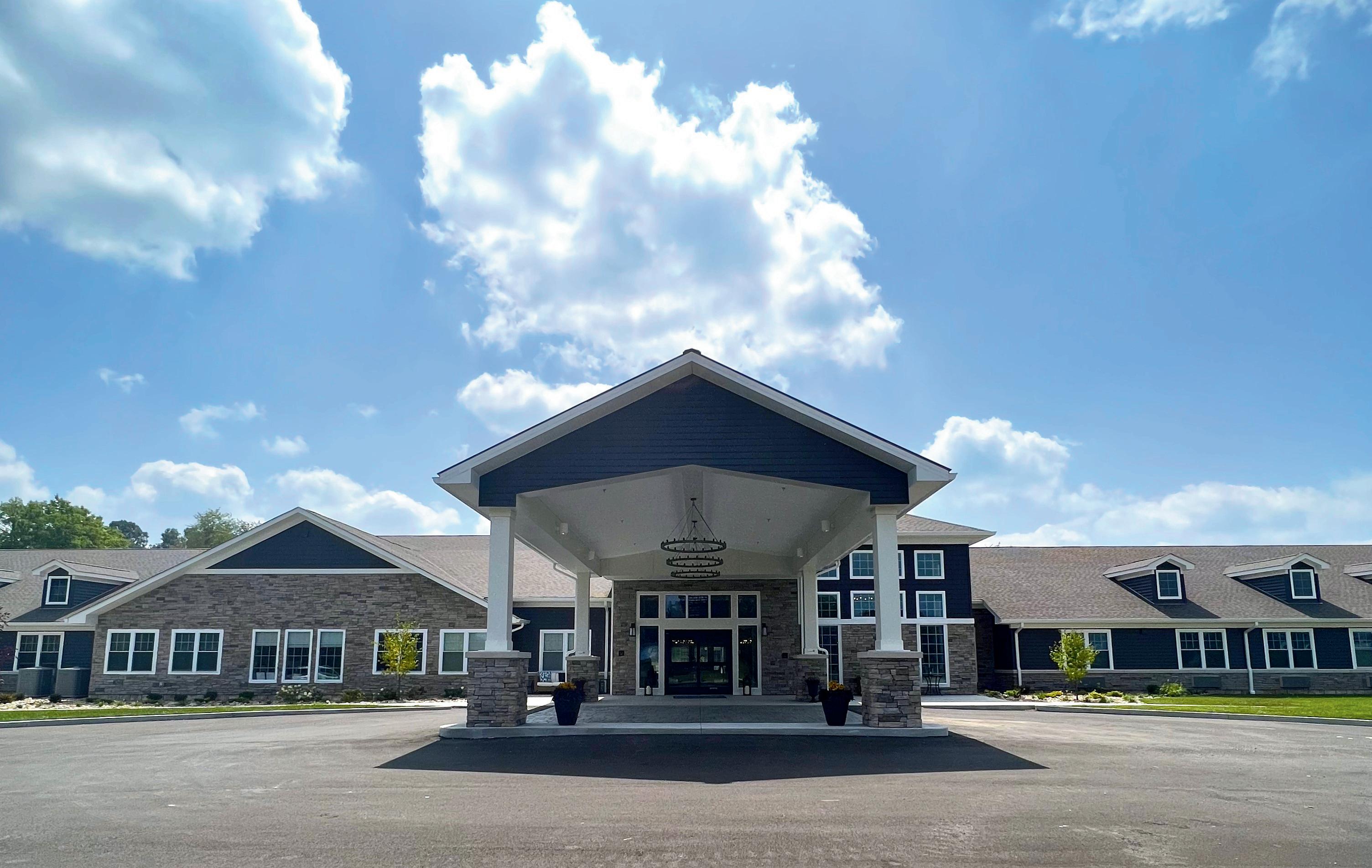



OCTOBER/NOVEMBER 2023 • 21 NOW OPEN! TOUR TODAY! 2201 New Holt Rd. www.charterofpaducah.com (270) 908-2201
ANN POLLARD Class
of 1973
First Chair / Rank Leader / Flutes
“I was the first chair and rank leader of the flutes as a senior at Tilghman.
Bands did not compete then as they do now. We had new half times shows to learn every week. That was a real challenge. We had to learn new music and new patterns every weekend— sometimes we did that successfully, sometimes not. Sometimes we’d return from halftime shows and Mr. Jack Henry, our band director, would give us a happy look. That kept us going. Rather than competitions our whole focus was making Mr. Henry happy.
Many years later, I got to return to the band as a band parent and chaperone. I certainly encouraged my daughter to join. She played the tuba. It was a thrill seeing the competitions.
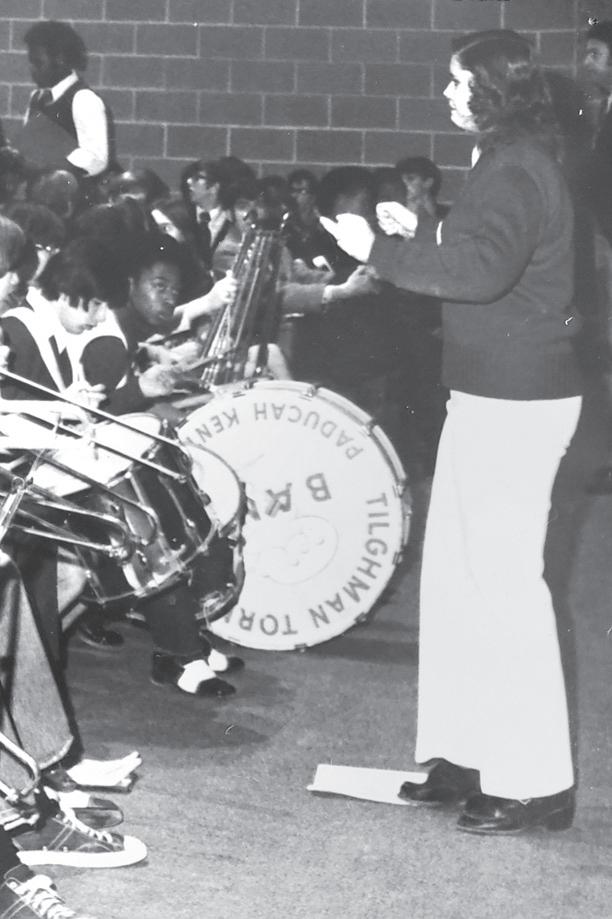
I think it’s true with lots of high school bands, it becomes your niche. It gives you your group that you hang around with in high school. I think that for kids who are shy or otherwise may not excel at other things, they are somebody in the band room. It becomes their own little world, and it was very much like that for me and my friends.”
BAND BLUE On the Cover

Left to Right
of
DEMMETRIA DONELSON / “Being in band is like being with family. It becomes your home away from home. We cry together, laugh together, and even occasionally argue with each other. But ultimately, we're still a team. Our band has been around for a LONG TIME, and when we get under the Friday night lights, our hearts go to work continuing the traditions passed down through generations of Band of Blue members. I love it because we have a family to get through high school with. I can’t imagine tackling these four years any other way.”
ASHER GRIFFITH / “Being in the Band of Blue has given me a direction throughout high school, and it's given me a place to belong and have fun. Unfortunately, COVID took a lot of our opportunities to build that community away. Over the past two years, we've been trying to rebuild it, bringing to the school a renewed sense of purpose, community, and that Big Blue spirit of rhythm and fun.”
ANAKIN WOMBLE / “A big benefit of being in band is the community, and it’s just fun to spend time with like-minded people who have similar goals. But for me, even better than that, is the music and performance. There's nothing I love more than just really, really putting on a show and hoping that someone in the audience is impacted by our music. That reaction you get when people are excited to see us and really get into the performance—that makes the time drilling formations, practicing performances, and perfecting our craft all worth it.”
ART DAVIS
1992-1997


Paducah Tilghman Band Director


“As a former director of the Paducah Tilghman High School Band, I’ve witnessed firsthand the profound impact of band participation on the lives of students. From the very outset, there’s a striking correlation between early development in music and academic success. We’ve consistently seen how the study of music aligns with mathematical and reading skills, and those who embark on their musical journey early tend to excel in these areas.
Music, especially in the context of a band, nurtures individual growth. It requires students not only to master the intricacies of their chosen instrument but also to understand the nuances of the music and their positions on the field. The discipline instilled through band participation makes band kids some of the most disciplined students you’ll find.
We often see that really intelligent students are drawn to the band. Music and academics are intertwined, with music acting as a catalyst for critical thinking. It's not just about playing notes; it’s about the holistic development of the individual. Band, in its unique way, contributes significantly to the academic core, shaping wellrounded individuals ready to face the challenges of the future.”
Vets Who Love Pets



OCTOBER/NOVEMBER 2023 • 23
Rennie Church, D.V.M.
Kelley, D.V.M.
Williams, D.V.M. 5401 Blandville Road • Paducah, KY 42001 • 270.554.0171
Ceglinski ANIMAL CLINIC L ife and Heal th I nsurance Ca l l us today (270) 527- 620 0 www.mtginsurance.com
John
Laura
BAND ofBLUE

STEVE RAYBURN Class
of 1972
Drum Major

“It has been 51 years since I graduated, and I still get excited when I see a marching band. I played alto sax at TIlghman. I was also involved in theater. With the auditorium and band room next to each other, I spent most of my high school career down in that end of the building. I loved it. It was full of great people that I cared for very deeply.
Roger Reichmuth was the band director my first year at Tilghman. I still run into him today. He was one of those teachers who had a huge impact on me. Floyd Burt, who started the entire music program for the city, was another incredibly revered man. He would walk into the room, we’d all stand up and start whistling “Hail to the Chief,” and he would wave us down and scowl at us. I remember once practicing the saxophone and Mr. Burt, who was always walking incredibly fast, came out of the office and walked across the room. When he got to the door he stopped and turned to me and pointed saying, What fingering were you using on that B flat?” I showed him and he said, No, no use this fingering for B flat instead because it’s going to be a lot easier, and it’s going to sound a lot better. I was blown away that he noticed that just walking through the room. He was an incredible man.
The Annual Ice Cream social was our big fundraiser for all the city music programs. For 10 cents a ticket you would get a piece of cake, a dish of ice cream or a drink, or all three for 30 cents. The food was in the cafeteria, and we would play music in the auditorium. Every concert ended with “America the Beautiful,” which was always fun to play. I remember my very last concert well. I had tears running down my face as I played “America the Beautiful.” The band just meant that much to me.”
24 • PADUCAH LIFE









OCTOBER/NOVEMBER 2023 • 25 4123 Schneidman Road • Paducah • 270.443.8851 sandersnursery.com Your path to a gorgeous landscape ( It’s FALL y’all! )
Tilghman’s Trailblazing Black Cheerleaders Braved the Backlash of Acceptance
At a time when children tasked with trailblazing were often met with taunts and threats of violence, three young women fought for equal access in a newly integrated Paducah Tilghman High School.
by Amanda Hutchison
IT WAS 1967, THE SUMMER BEFORE SCHOOL BEGAN, AND WANDA STEGAR PLATT AND ELAINE Spearman Patterson were, in some ways, typical 16-years-olds excited to be starting at a new high school. Like many girls, they dreamed of being cheerleaders, thinking it would be a great way to make friends and establish an identity for themselves at the new school. The girls imagined sleepovers with teammates and hoped to find the same excitement and camaraderie that they admired among the cheerleaders they watched at games and on TV.

26 • PADUCAH LIFE
ABOVE: The 1969 Tilghman cheerleading squad included Elaine Spearman, Deborah Alston, Jeannie Wise, Debbie Fisher, Laurel Bryant, Susan Skiba, Ginny Ann Black, Roberta Shelby, Jan Johnston, Wanda Stegar, Elizabeth Johnson, and Denise Shidal.
This dream wasn’t far from the girls’ past reality. Wanda had been a popular cheerleader at Lincoln High School. Elaine had previously attended Brazelton Junior High School and had also thought about being a cheerleader. Now, Lincoln High School was closed, and the Black students who previously attended there would join their White classmates for the first time.

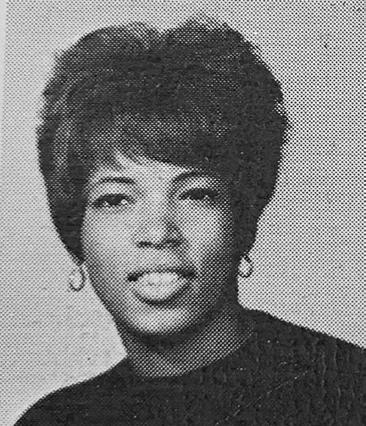

What they hoped would be a normal high school milestone, was in fact, just one facet of the difficulty of the first year of attending a newly integrated Tilghman. The girls tried out for the cheer squad and were immediately told they could not be part of the team by the three White staff members who provided no explanation for their rejection.
On the other hand, integration of the football team had never been an issue. Black football players had been playing on the team for years. During the 1967-68 school year there were eleven Black football players on the team. Both the young Black cheerleader candidates knew they had the skills and had mastered the routines, which left only one reason for the rejection: it was an objection to their race.

The next question: do the girls accept defeat or stand up for themselves? Although Wanda’s mother, Della Stegar, begged her not to move forward (her father had died earlier that summer and she didn’t want to face any
while the cheerleaders patted their backs and hugged and cheered for the White football players, they never acknowledged him. When he heard that Wanda and Elaine were rejected from the team, he demanded a change.
possible violence), the girls decided they wanted to fight for their rightful place at the high school. With the support of prominent community members including Reverend W.G. Harvey, Lettie Lee McCory, Kunoy Young, Barbara Young, Robert Coleman, and B.W. Brown, a plan on how to proceed was developed in Wanda’s living room. The group then met with the school board, and were, once again, told no.
The news traveled quickly. Curtis Newbern, one of Tilghman’s star football players at the time recalled the camaraderie he experienced with his teammates of both races. But it always bothered him that out on the field
“I was tired of never being recognized on the field,” he recalls. “I told the coach if they did not allow the girls to cheer, I would walk off the field. The coach responded that if any “n——-“ felt that way they could turn in their equipment.” Curtis remembers walking off the field and looking back at his fellow football players. Their heads were down. No one followed him. That evening Curtis’s family received many guests at their door. The parents of the Black players were ashamed of their children’s inaction. The students came to apologize and to say they would participate in the walk-off as well. The Tilghman vs. Mayfield game was nearing, and it was clear that the Black players on the team— including Curtis—planned to walk off the field if Wanda and Elaine could not cheer at the game.
Orlando McReynolds, fresh from New York City, was a new Black student at Paducah Tilghman. Although he had no interest in football and had never been to a game, this particular matter caught his attention. “It was a culture shock,” he recollects. He remembers attending a pep rally and hearing the song “Dixie” played by the band. “Well, that’s about the most insulting thing you can play to an African American,” he thought. He had just been in school about a week when the study hall proctor called him, Curtis Newbern, and a few others to talk to the principal. The principal started the conversation by talking about how
 The senior cheerleaders of 1969 decorate a bus dedicated to taming the Tigers!
The senior cheerleaders of 1969 decorate a bus dedicated to taming the Tigers!
OCTOBER/NOVEMBER 2023 • 27
Elaine Spearman Patterson Wanda Stegar Platt Orlando McReynolds Curtis Newbern
Tilghman Black Cheerleaders

someone was stealing from the market across the street. “That was just an opening.” Orlando remembers. “It was a way to start the conversation.”
The discussion then moved on to talking about the football players and cheerleaders. The principal had a meeting the next day with the African American community leaders and, to avoid confrontation, he chose to speak to the students before meeting with the leaders. Curtis and Orlando explained their terms. The football players would not walk off if Wanda and Elaine were put on the cheerleading squad and the band stopped playing Dixie. The principal agreed.
But the fight wasn’t over for Wanda and Elaine. The principal met with each girl individually to discuss the terms. They remember feeling threatened by him as he explained in an intimidating tone the risk of their choice to cheer. Wanda recalls him asking if her mother could afford for her to cheer and explaining that, as a cheerleader, she could not flirt with boys. He was clear on the specifics of how the girls were expected her to comport themselves in school. “When I left his office,” Wanda shares, “he made me feel like I was nobody and that I did not deserve to be a cheerleader.”

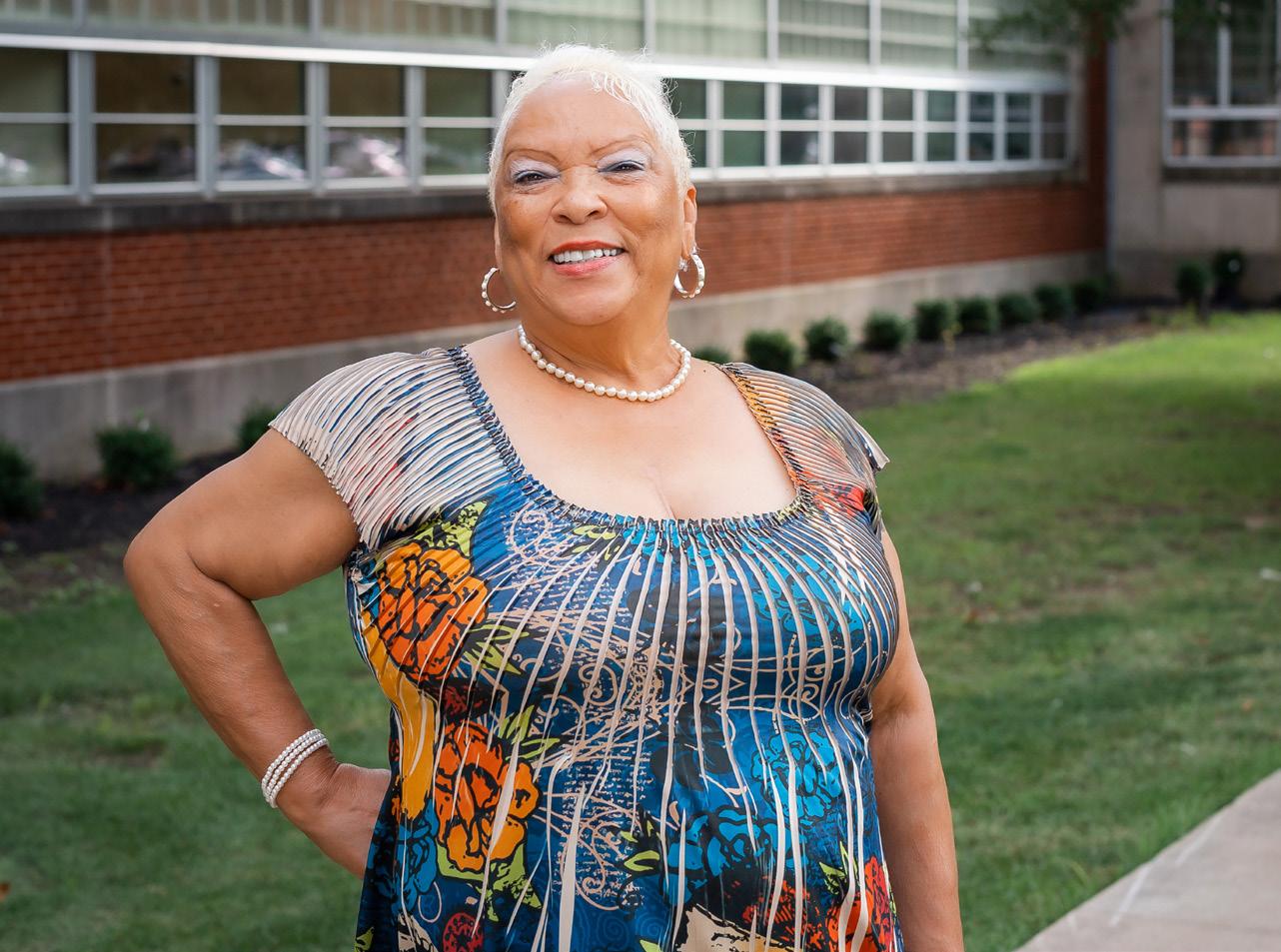
After it was announced that the girls would, indeed, join the cheer squad, the school received anonymous threatening phone calls and written notes. Elaine still recalls the offensive language: “If them “n——s” get out on the field, they’ll be shot.”
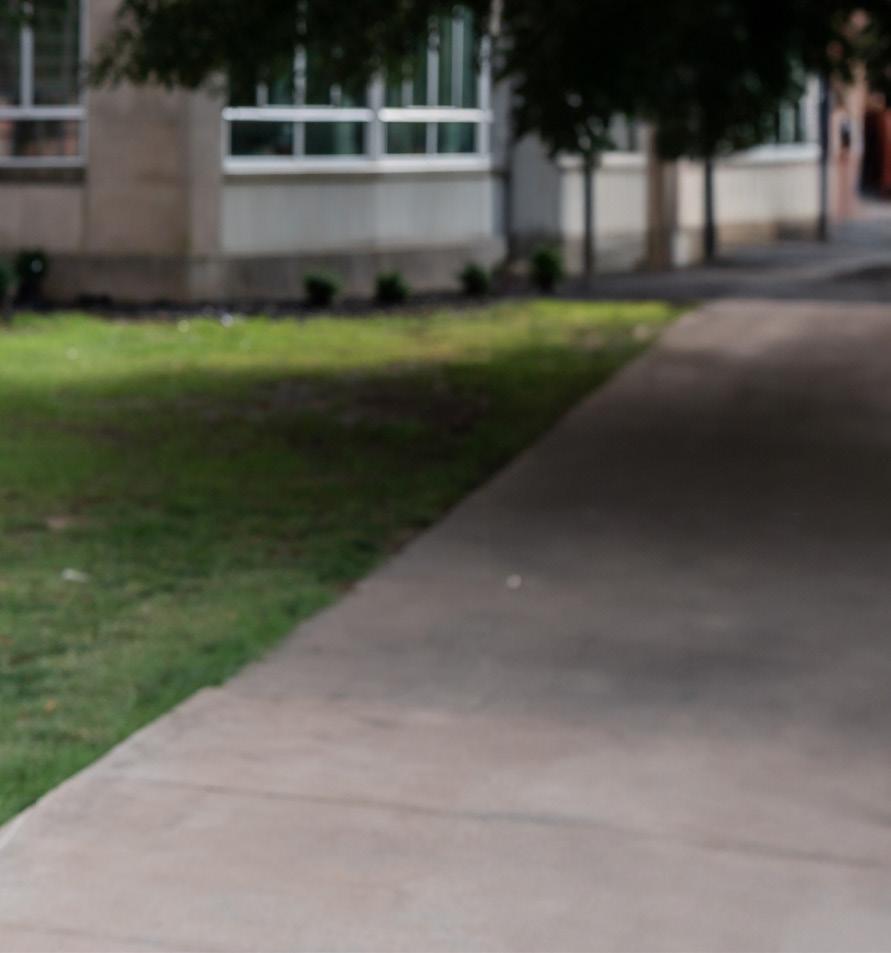
“We had to sit out for the first four games of the season and were not allowed to cheer alongside the White cheerleaders,” Elaine remembers. Eventually the girls
were allowed to participate at the games, but the threats continued. Wanda recalled that spitballs were thrown at them, sometimes including rocks. There were confrontations in the bleachers with the Black and White Tilghman fans. But the girls? They were told to smile through it all because that’s what cheerleaders do.
“Can you imagine the fear we experienced every game?” Elaine notes. “We had to smile amidst the pain, anger, and fear we were experiencing all night. Cheering, smiling, acting happy and wondering the whole time if this would be the night we got shot or killed.”
For their protection, the police gave Elaine’s father, James Shaw, permission to stand on the sideline during the games with the sheriff and a gun in his pocket. Two of Elaine’s younger siblings would sit on the bottom row of the bleachers right behind where Elaine was cheerleading to keep an eye on what was going on around her and tell their father if they saw anything.

Wanda and Elaine assumed the other cheerleaders would naturally become their friends, but that never really happened. Elaine recalls one cheerleader who did invite her to practice routines at the girl’s home. But more of the interaction between the girls was the cold shoulder and a limited amount of engagement. The White girls had their own sleepovers but never invited Wanda or Elaine.
Fifty plus years later, Wanda and Elaine are still grappling with their teenage years. For both, they put away their
LEFT, Wanda Stegar Platt; ABOVE, Elaine Spearman Patterson
28 • PADUCAH LIFE
Orlando McReynolds and Curtis Newbern
experiences, not realizing how much it affected their future selves. “I had blocked a lot of it away and did not realize how much of those years and the racism I experienced had affected my college experience,” Elaine shares. “I didn’t realize it was that bad until we started trying to remember what we went through in 1967.”


The next year Deborah Alston and Elizabeth Johnson joined the cheerleading team, and the first two Black cheerleaders were now a group of four. “There were so many painful and angry moments and memories that I have of that experience of being the first ones,” Elaine recalls. “But there are also moments of happiness as we were able to open the door for the subsequent Black cheerleaders.”
Today, Paducah Tilghman’s cheer squad is a beautiful mosaic of diversity: a brown, black, white, and every-shade-in-between patchwork of progress begun by several young, brave, Black women in 1968.

The POWER TEAM of Hearing Care
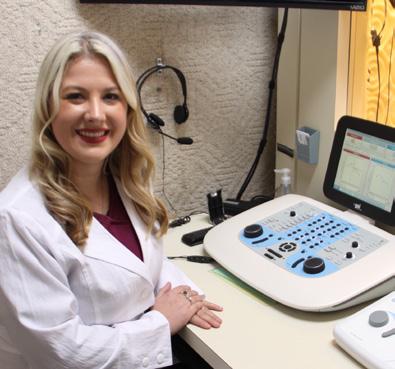
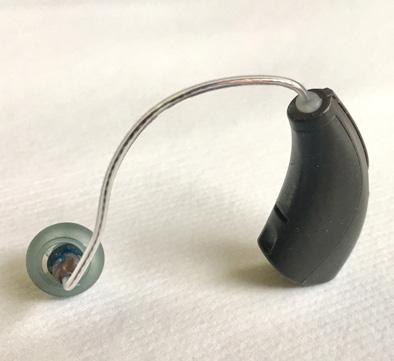



“There were so many painful and angry moments and memories that I have of that experience of being the first ones, but there are also moments of happiness as we were able to open the door for the subsequent Black cheerleaders.”
OCTOBER/NOVEMBER 2023 • 29
technology can restore your hearing... but a proper hearing aid fitting and ongoing professional care is the secret to success! What if you could have your hearing professionally tested, have your hearing restored and receive the service you need... at an affordable price? At Stone-Lang... we make that happen! • Free Hearing Screening • Discounted Pricing • Trial Purchase • Payment Plans Available (for those who qualify) 2620 Broadway Paducah, KY 270-442-3561 210 South 12th Murray, KY 270-753-8055 424 Lake St. Fulton, KY 800-949-5728 Call Today! 800-949-5728 Hearing Rehabilitation
Elaine Spearman Patterson
New
Teola
Jackson
Hegwood Advocate and Activist
Wanda and Elaine were not the only girls to try out for the Paducah Tilghman squad. Teola Jackson Hegwood had also cheered at Lincoln High School. And when she found out she, too, was being excluded from the squad she was equally disenfranchised.
Teola was athletic and had always been involved in sports. Those experiences encouraged her to act. But faced with consistent rejection, she and several other students approached the football team about a walk-out during the national anthem at the Mayfield game. The players refused. But the students decided to proceed—they would bring their signs to the game and walk off when the national anthem was played. They met at a friend’s house and made signs. Teola didn’t know at the time that Curtis was also discussing a walk-out. Word got to the principal that protests were being planned for the homecoming game.

The principal asked who the leader of the protest was, and Teola was singled out. The principal called her and her father, Jimmie Jackson, to the office. He explained that because she was instigating protests, they would have to expel her from the school. “My father calmly explained that I was sixteen years old,” Teola remembers. “And I needed my education.” The principal allowed her to stay, but said she would never be allowed on the team.
During her years at Tilghman, Teola ran track, but eventually left the team, becoming disheartened by the continuous comments from her White classmates. She loved sports, but after that meeting, she even stopped attending football games. When Teola finished her education at Tilghman, she attended Concordia College in Portland, Oregon. There, she was finally invited to join the sports teams. She became head of the cheerleading squad, she joined the golf team, and she played volleyball. “My experience was difficult for a 16-year-old,” Teola reflects. “It made me feel like I could never be somebody. My time in college showed me that I could.” Now in her 70s, Teola’s love of sports hasn’t waned. She watches football and plays pickleball, volleyball, and softball.



“My experience was difficult for a 16-year-old. It made me feel like I could never be somebody. My time in college showed me that I could.”
30 • PADUCAH LIFE
-Teola Hegwood Jackson
HE PADUCAH HISTORICAL Preservation Group (PHPG) provides leadership, advocacy, and education to ensure the protection of African Americans’ diverse cultural heritage and historical sites throughout the Purchase Area.
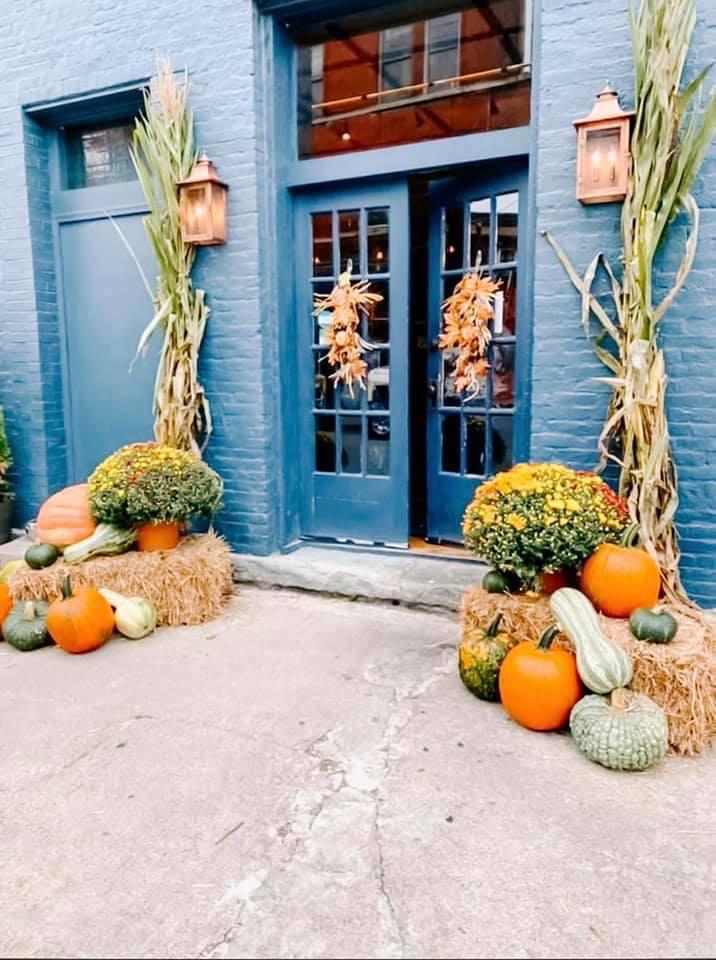


Grounded in the belief that education is the most effective and enduring means to protect historical resources, the PHPG is committed to excellence and exceeding the community’s expectations in all that they do.
In December 2022, the PHPG posted the 1968 Paducah Sun article on Paducah Tilghman High School’s first black cheerleader to a Facebook group page. Immediately, there were scores of comments posted about the many inaccuracies within the article. Several of the former students, including the actual cheerleaders, posted about their story. This led to the actual accounts from the 1968 PTHS cheerleaders, Elaine Spearman Patterson and Wanda Stegar Platt, being published in the W. C. Young Souvenir book for Paducah’s Emancipation Celebration and also here on the pages of PADUCAH LIFE Magazine.

Historical Preservation Group LONDON DOWNTOWN MAYSVILLE MAIN STREET MIDDLESBORO MAIN STREET DOWNTOWN MOREHEAD MURRY MAIN STREET PADUCAH MAIN STREET PERRYVILLE MAIN STREET PIKEVILLE MAIN STREET
“PHPG wishes to honor Elaine and Wanda for their commitment to stand up during the turbulent civil rights era in order to pave the way for other Black girls to have the opportunity to be on the PTHS cheerleading squad. They were true trailblazers,” commented Javanta Dawson, secretary of the PHPG.
MAIN STREET PINEVILLE MAIN STREET SALYERSVILLE HEART OF SCOTTSVILLE SHELBY MAIN STREET SPRINGFIELD MAIN STREET TAYLORSVILLE MAIN STREET TRI-CITIES MAIN STREET WILLIAMSBURG MAIN STREET An agency of the Kentucky Tourism, Arts and Heritage Cabinet, the Kentucky Heritage Council/State Historic Preservation O ce is responsible for the identification, protection and preservation of prehistoric resources and historic buildings, sites and cultural resources throughout the commonwealth, in partnership with other state and federal agencies, local communities and interested citizens.
LIKE us on And get MORE out of LIFE! OCTOBER/NOVEMBER 2023 • 31


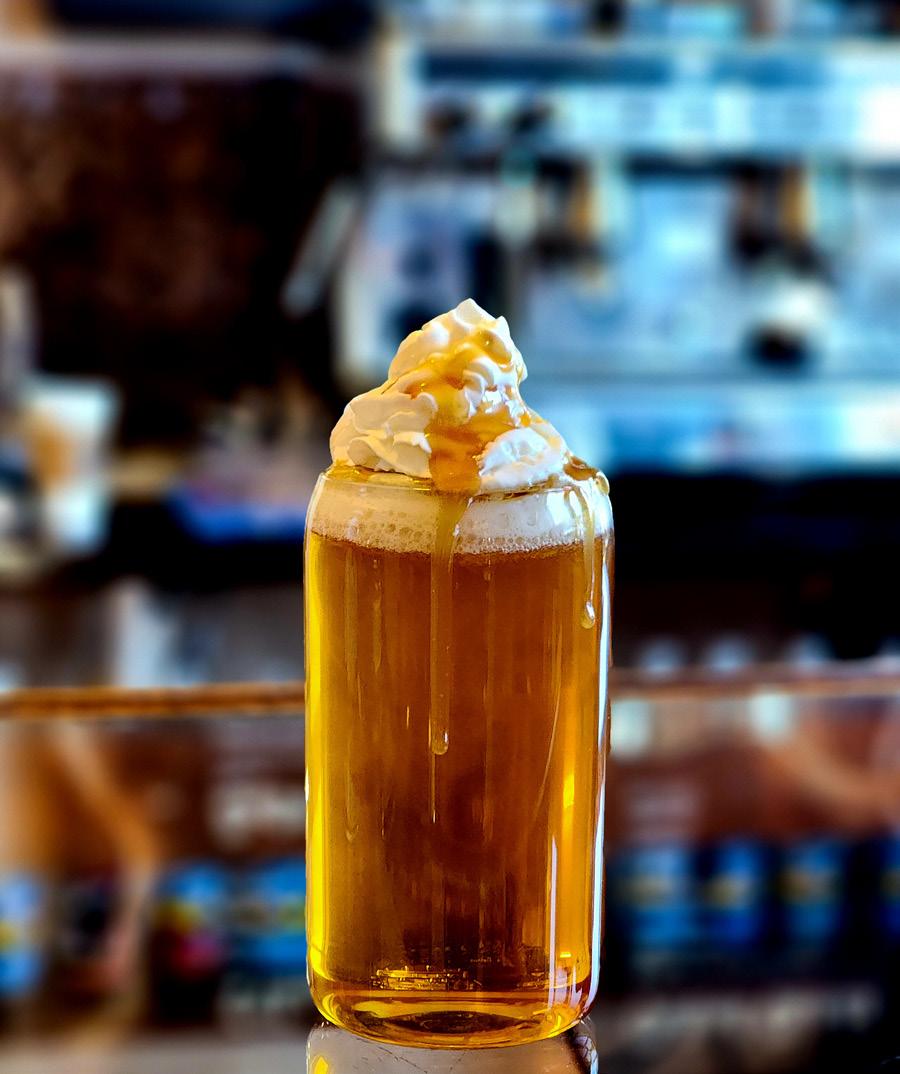
The Paducah T FALL Visit a MainKentucky r t in Love, Visit a Kentucky Main r t Near You! BARDSTOWN MAIN STREET BEATTYVILLE MAIN STREET CAMPBELLSVILLE MAIN STREET CARROLLTON MAIN STREET CYNTHIANA MAIN STREET GUTHRIE MAIN STREET GRAYSON MAIN STREET LAGRANGE MAIN STREET

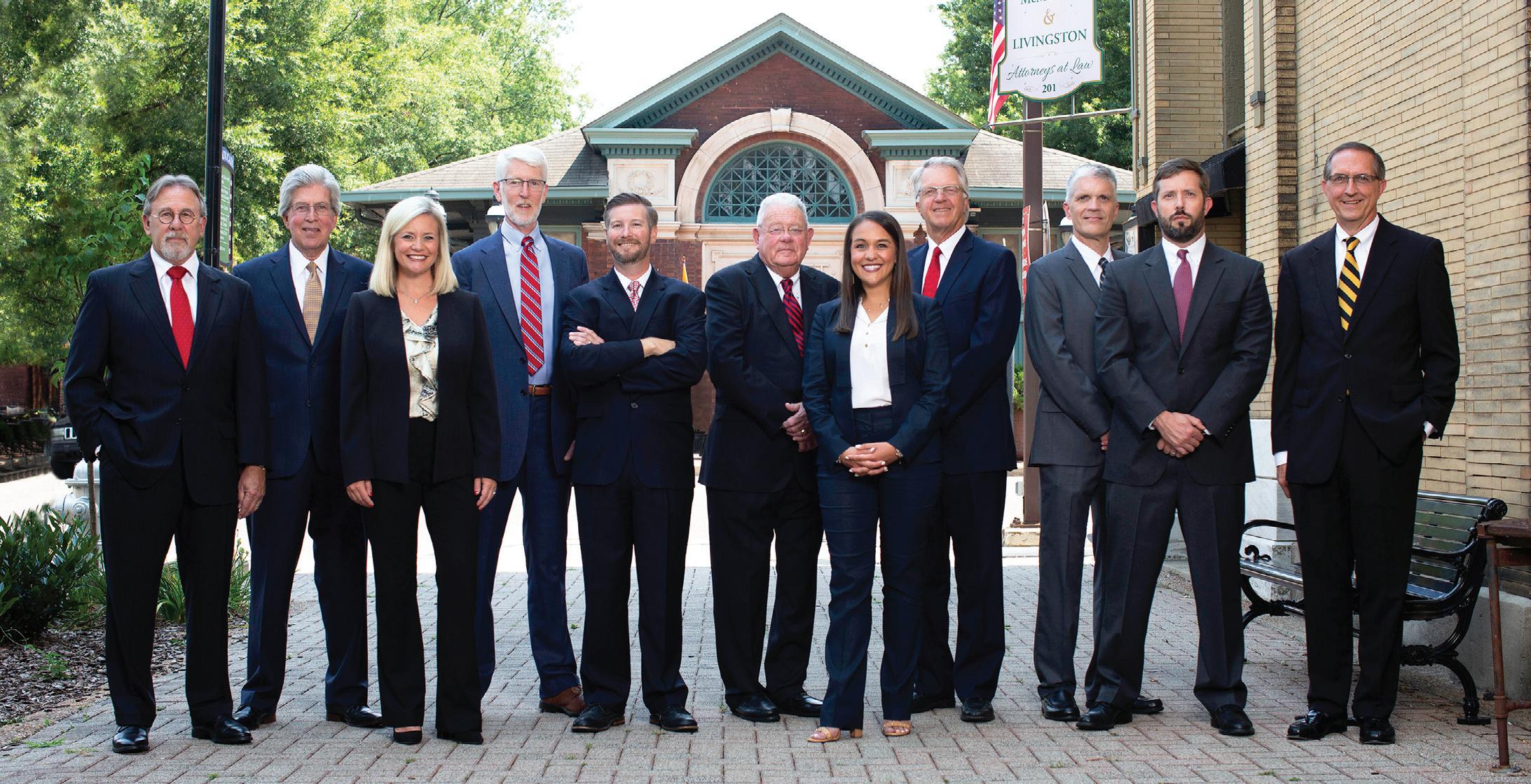

32 • PADUCAH LIFE Business Law • Employment Practices • Civil Litigation • Real Estate • Wills & Trusts • Divorce/Family Law • Custody & Adoption • Personal Injury • Maritime Law • Wrongful Death 201 Broadway, Paducah KY • 270-443-6511 • www.Lawyersforyourlife.com This is an adverTisemenT
Negro League Baseball found a champion in Dennis Biddle
by J.T. Crawford H
AS DENNIS BIDDLE TRAVELED THE COUNTRY WITH FORMER NEGRO LEAGUE BASEBALL players, he started to realize the preciousness of the time they had together. Dennis, who was the youngest player to ever enter the Negro League, played for the Chicago American Giants at the very end of the league’s era in the early 1950s.
In 1996, he formed the organization Yesterday’s Negro League Baseball Players in order to represent and band together surviving players. “I was watching them all get older,” says Dennis. “So as I traveled and saw them across the country, I wanted to make sure I got their autographs. I carried fabric with me and had them sign it. I didn’t know if it would be a quilt or a wall hanging or what, but I wanted to get those preserved.”
Dennis, now 87, has since seen many of the players pass away. “There aren’t many left,” he says, “and of those, many are over 90 years old.” Dennis took the fabric and had them made into three wall-hangings. His thoughts were to perhaps auction one or two of them off at some point. Then, he met Betty Dobson with the Hotel Metropolitan.

“Betty called about the hotel in Paducah,” he says. “She was looking for information on any Negro League players who had stayed in Paducah. And of course, some of them had. It was the only place they could stay overnight if they had to stay in Paducah.”
Betty recalls her connection with Dennis. “Reverend Donna Hawkins had been in Florida and met former player Arthur Hamilton who said he had stayed at the hotel. I tracked Mr. Hamilton down, and he said he’d be willing to come visit Paducah, and he thought I should talk to Mr. Biddle. After the hotel was up and running, Mr. Biddle called and said, ‘I’m going to send you something.’ And here the quilt is!”
Some of the players who have signed, like Arthur Hamilton and Sherman Brewer, have been to Paducah and visited the Hotel Metropolitan after its renovation. “Mr. Brewer was also a Harlem Globetrotter,” adds Betty. “Some of the players did both so they could be employed all year round. It’s an honor to have this piece at the hotel and recognize their place in history and these players’ connections to Paducah.”
Most of the players who signed the quilt are now gone, but their memory is not. Through the efforts of Mr. Biddle their legacy lives on, and a bit of baseball history is now housed in Paducah at the Hotel Metropolitan.
OCTOBER/NOVEMBER 2023 • 33
Sharing Paducah’s Creative Spirit
Sharing Paducah’s Creative Spirit

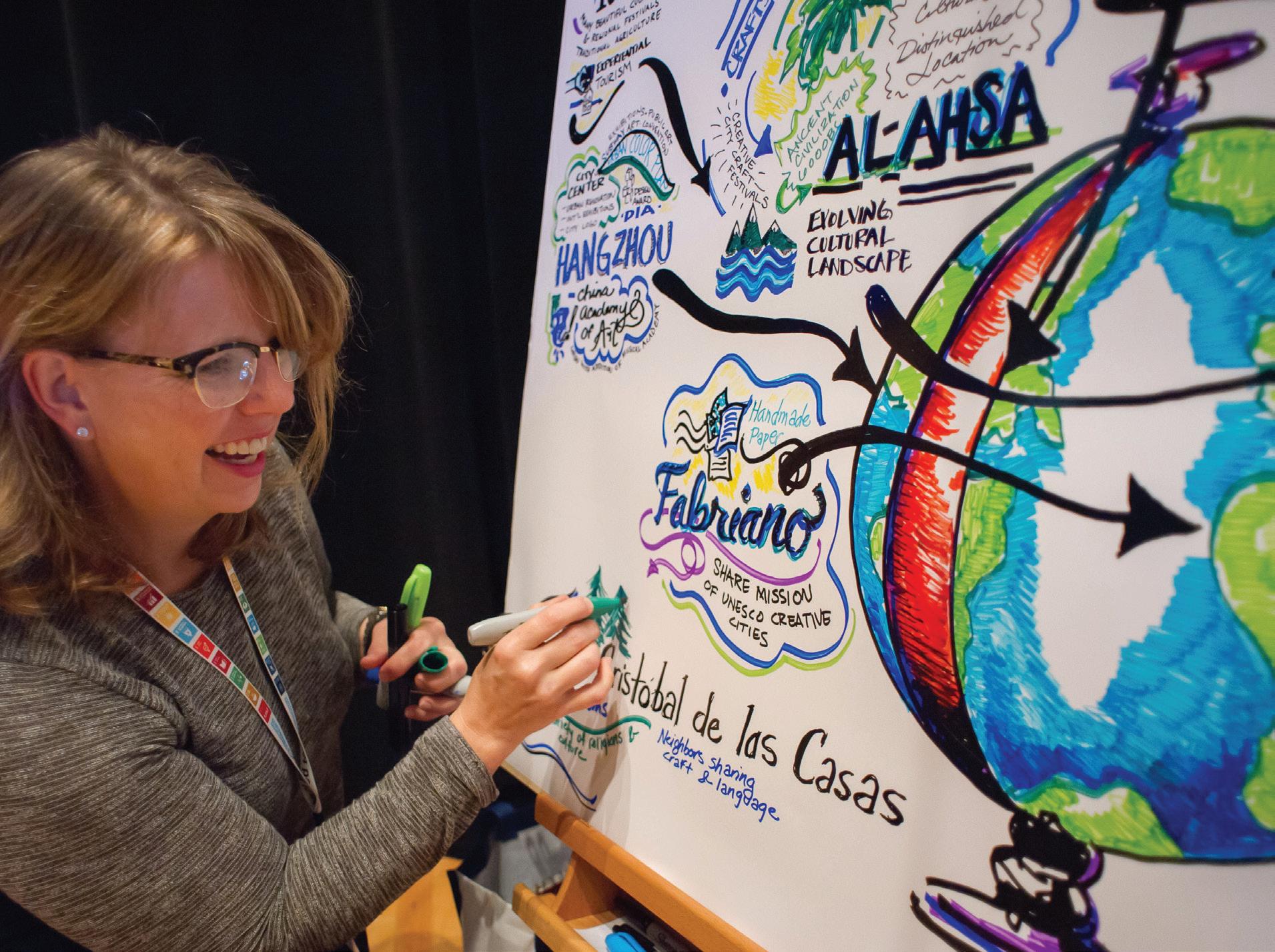


From the moment the first dogwood blooms until holiday carolers line the streets, creativity abounds in Paducah. But did you know Paducah Creativity extends beyond the four rivers and into the farthest reaches of the globe? Since Paducah was designated a UNESCO Creative City in 2013, the opportunities have been seemingly endless, each one shepherding our community into new realms and relationships around the world.
From the moment the first dogwood blooms until holiday carolers line the streets, creativity abounds in Paducah. But did you know Paducah Creativity extends beyond the four rivers and into the farthest reaches of the globe? Since Paducah was designated a UNESCO Creative City in 2013, the opportunities have been seemingly endless, each one shepherding our community into new realms and relationships around the world.
Perhaps you witnessed one of Paducah’s most recent collaborations when Indonesian musical group, Kaihulu, performed at the Lower Town Arts and Music Festival. Or maybe you met someone from a visiting city when Paducah hosted the first–annual meeting of UNESCO Creative Cities of Craft and Folk Art in 2017. Did you try paella, the traditional Valencian dish made by Spanish potter, Jaime Romero, when he visited McCracken County High School? Each of these opportunities was made possible by the UNESCO Creative Cities Network.
Perhaps you witnessed one of Paducah’s most recent collaborations when Indonesian musical group, Kaihulu, performed at the Lower Town Arts and Music Festival. Or maybe you met someone from a visiting city when Paducah hosted the first–annual meeting of UNESCO Creative Cities of Craft and Folk Art in 2017. Did you try paella, the traditional Valencian dish made by Spanish potter, Jaime Romero, when he visited McCracken County High School? Each of these opportunities was made possible by the UNESCO Creative Cities Network.


Not only has Paducah hosted creatives, but community members have also traveled the world, bringing Paducah’s cultural traditions to cities in China, Italy, Mexico, South Korea, and Spain, to name just a few. Imagine teaching a child how to hand-stitch a quilt square in a mixture of Spanish and English that somehow translates to a moment of curiosity and understanding. There’s something truly profound about this collaboration through cultures—and Paducah is in the midst of it all— proudly representing Kentucky and the United States as we share our creative spirit with the world.
Not only has Paducah hosted creatives, but community members also traveled world, bringing cultural traditions cities in China, Italy, Mexico, South Korea, and Spain, to name just a few. Imagine teaching a child how to hand-stitch a quilt square in a mixture of Spanish and English that somehow translates to a moment of curiosity and understanding. There’s something truly profound about this collaboration through cultures—and Paducah is in the midst of it all— proudly representing Kentucky and the United States as we share our creative spirit with the world.
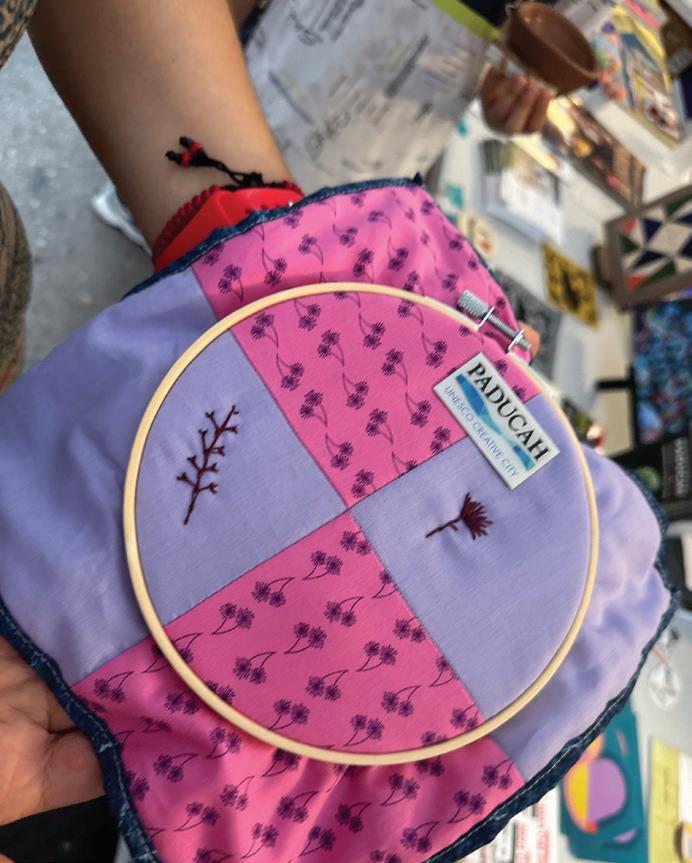
 The Wheelhouse Rousters perform in Jinju, South Korea.
The Wheelhouse Rousters perform in Jinju, South Korea.
The Wheelhouse Rousters perform in Jinju, South Korea.
The Wheelhouse Rousters perform in Jinju, South Korea.
Above: Lexie Millikan makes paper in Fabriano, Italy. At left: Delegates presented gifts to Mayor Brandi Harless during the 2017 meeting of UNESCO Creative Cities of Crafts and Folk Art in Paducah.
Above: Lexie Millikan makes paper in Fabriano, Italy. At left: Delegates presented gifts to Mayor Brandi Harless during the 2017 meeting of UNESCO Creative Cities of Crafts and Folk Art in Paducah.




At left: Two girls learn to quilt in Manises, Spain. Above: Napkins hand-dyed in Paducah were shared with new friends in San Cristobal de las Casas, Mexico.


CREATIVE CITIZEN
CREATIVE CITIZEN
Vick Patel
Vick Patel


Paducah Hospitality Partner
Paducah Hospitality Partner
Q: How does Creativity affect your daily life? Creativity significantly impacts my daily life by enhancing problem-solving skills, fostering innovative approaches to managing two hotels, and nurturing my daughters’ development through engaging activities that stimulate their imagination and growth.
Q: How does Creativity affect your daily life? Creativity significantly impacts my daily life by enhancing problem-solving skills, fostering innovative approaches to managing two hotels, and nurturing my daughters’ development through engaging activities that stimulate their imagination and growth.

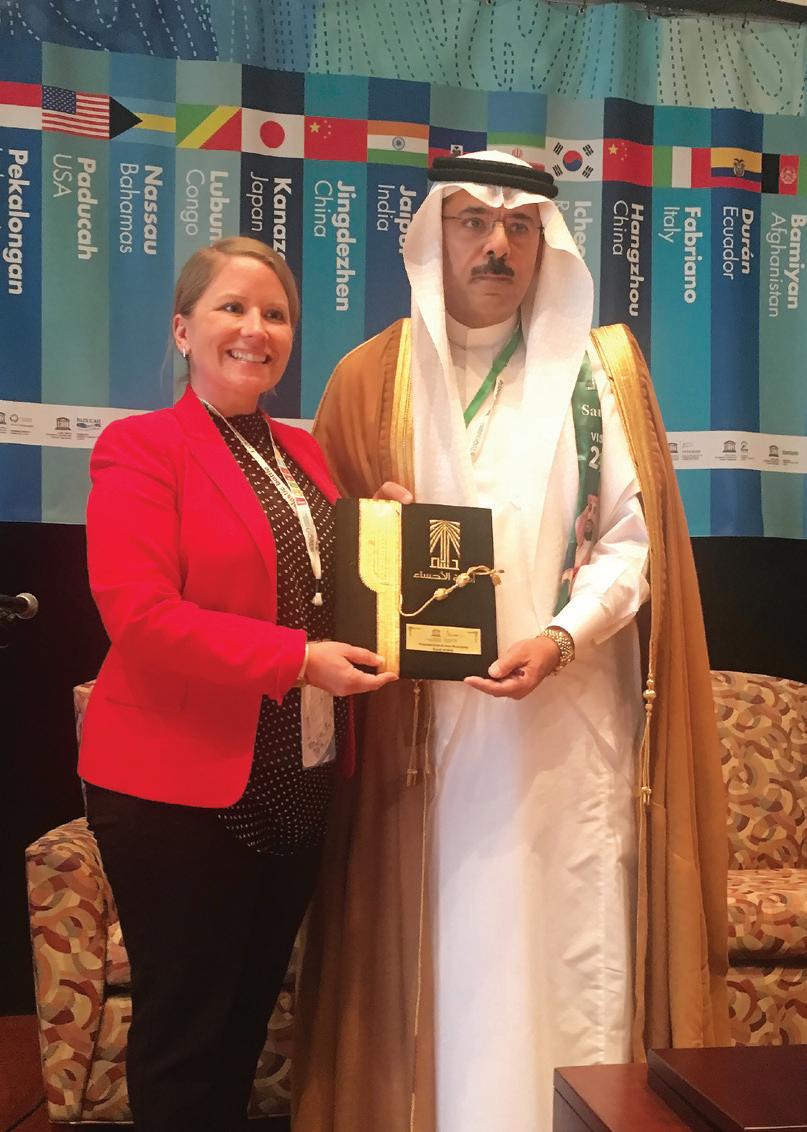

Q: How does thinking Creatively guide you in your business?
Thinking creatively in the hotel industry can lead to innovative guest experiences, unique service offerings, and effective problemsolving. It enables me to enhance guest satisfaction and set my hotels apart in a competitive market.
Q: How does thinking Creatively guide you in your business? Thinking creatively in the hotel industry can lead to innovative guest experiences, unique service offerings, and effective problemsolving. It enables me to enhance guest satisfaction and set my hotels apart in a competitive market.
Q: What advice would you give to other Paducahans on how to find their Creative Spirit?
Q: What advice would you give to other Paducahans on how to find their Creative Spirit?
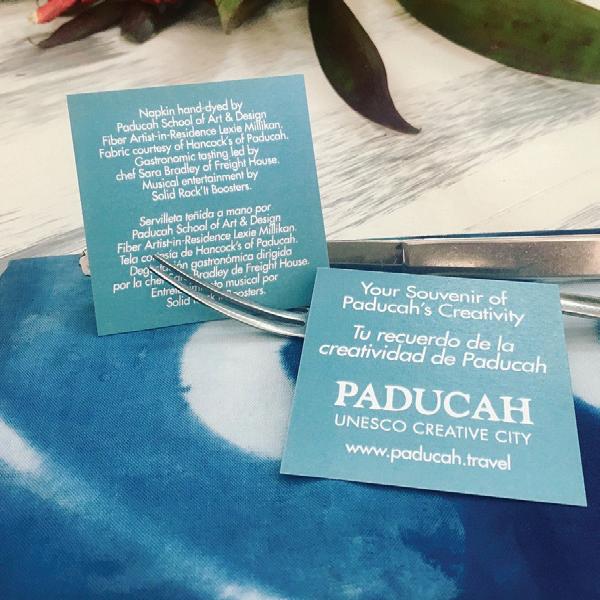

Start by exploring things you love, like painting, photography or cooking. Surround yourself with from local and nature and remember to be patient with yourself!
Start by exploring things you love, like painting, photography or cooking. Surround yourself with inspiration from local art and nature and remember to be patient with yourself!
At left: Two girls learn to quilt in Manises, Spain. Above: Napkins hand-dyed in Paducah were shared with new friends in San Cristobal de las Casas, Mexico.
Enriching their Understanding.
by Stephanie Watson
Expanding their Horizons. Engaging their Intellect.
PADUCAH LIFE HAS PROUDLY FEATURED THE STORIES OF MANY TALENTED YOUNG PEOPLE OVER the years. From athletes and artists to intellectuals and innovators, our piece of the Commonwealth is rich with gifted, ambitious young thinkers. Each summer, some of the most talented of these teens hone their diverse skills while expanding their perspectives at one of three Kentucky Governor’s School programs: Governor’s School for the Arts (GSA), Governor’s School for Entrepreneurs (GSE), and Governor’s Scholars Program (GSP). Here we explore what these programs offer our young people while also celebrating the wealth of knowledge and experience they bring back to our community.
36 •
PADUCAH LIFE
Governor’s School for the Arts (GSA)
Every summer, a faculty of artists and educators guide over 500 of Kentucky’s young artists through three weeks of fun, yet intense instruction. The students live and breathe the arts during this often life-changing experience. They meet new friends, explore their creativity, and make uniquely personal discoveries.
JILL NICHOLS
Senior/McCracken County High School
Governor’s School for the Arts for Instrumental Music: Violin
By attending GSA, I was given the opportunity to learn with some of the best and brightest students and teachers across the entire state. Apart from the experience, I also knew that a significant portion—if not all— of my college would be paid for if I was accepted.

Over the course of the summer, we had large ensemble practices that were the entirety of the string players selected. We had a piece to play and had master classes/seminars from professionals that both helped strengthen our playing and taught us about the construction of our instruments. We had individual lessons from some of the University of Kentucky’s best teachers. In the afternoon, we had small ensemble studios that were split into six
different blocks that we rotated throughout the week. These blocks could range from duets to groups of five players all on different instruments and while they were mostly classical pieces, we also had jazz pieces and modern compositions. We also had free improv sessions.
Beyond the world of Instrumental Music, the entirety of GSA had daily presentations from professionals in many artforms, such as dance, creative writing, and vocal music.
Outside of our work, we were also given opportunities to make friends and have fun. We went on a trip to the Kentucky Center for the Performing Arts in Louisville. We also took in the wonderful Speed Art Museum. We finished the night by enjoying a wonderful performance of A Midsummer Night’s Dream by Kentucky Shakespeare.
GSA greatly increased my ability to play chamber music. I had previous practice playing both solo music and playing in large orchestras, but my experience with chamber music was very limited. I struggled with playing the music when I first started, but with the support of my professors and peers, I learned to adjust my playing style for small group settings.
GSA helped change my perspective by introducing me to many different art forms such as creative writing, drama, film, photography, and dance. It also made me aware of the various career paths that are directly involved with playing music.

Being part of a community of likeminded students with similar interests and goals really helped me take my playing to the next level. I struggled a
lot with rhythm and entrances in my pieces and they offered both useful tips and helped me practice my difficult parts. While GSA is not directly relevant to my career choice of chemical engineering, I have played in the SIU Orchestra since my sophomore year and hope to continue playing with them. GSA has really helped increase my ability to play college level music.
The best thing that I’ve been able to bring back to my high school music community are the new practice tips and warm ups for my high school orchestra. The teachers there offered great tips for how to practice effectively and how to correctly do stretches to warm up.
ANDREW FARMER
Senior/McCracken County High School
Governor’s School for Entrepreneurs
I chose this program because I have always been fascinated with entrepreneurs. Because of the program, I was able to learn about all aspects of how business works and how to start a business from some top business leaders in Kentucky. We got to hear about their ups and downs, advice for running a
OCTOBER/NOVEMBER 2023 • 37
successful business, and how to make a company successful long-term. I have seen how creating your own life and work can be exciting and challenging.
Over the course of the program, we visited and toured several innovative businesses in Kentucky and heard from some first-time entrepreneurs. We even got to connect with some successful entrepreneurs that were more than happy to give us their contact information if we ever had questions.
On the last day of the program, we competed in Demo Day, a group project that we had worked on from day one. It was an incredible event in which we presented a six-toeight-minute pitch to an audience of over 400 as well as three judges about the product we designed to solve a real-world problem. It was eye opening to see first-hand how a successful product is always a solution to a problem.
I learned lifelong entrepreneurial skills that will help me through college and job interviews. I learned the importance of networking and how to recognize an opportunity and take advantage of it. I learned that most businesses are successful because they are trying to fill a need. I also learned that strong entrepreneurs are never successful by themselves. They had to build great teams.
My perspective was changed when I realized I can look at most any new product and see that they are solving a problem that most people didn’t even realize needed solving.
I loved meeting like-minded teens from all over the state. Everyone came from a slightly different background and brought a different perspective. One of my favorite things about GSE was the friendships I formed, and I still talk to many of the people I met. We’re even hoping we end up at the same college!
Governor’s School for Entrepreneurs (GSE)
From high school through college and into the business world, GSE empowers the dreams of Kentucky students who have the drive and passion to be Bluegrass entrepreneurs. Kentucky was the first state in the nation to create a Governor’s School for Entrepreneurs. Since the first class of 49 high school students in 2013, it has grown to more than 800 graduates, and now offers high school and collegiate programming. As a result of this program, high school students have launched more than 30 businesses and filed multiple patents.
Being an entrepreneur is about recognizing an opportunity, and the GSE experience helped reaffirm that I want to be in business for myself one day. It showed me that if you really have a passion for what you do, you are more likely to be successful. That’s the perspective I hope to bring back to my community: You never really find something unless you’re looking for it.
ZAYNA YAZIGI Junior/St. Mary High School Governor’s School for Entrepreneurs
I chose GSE because I thought that is where my skill set would be used the
best. I am very interested in learning more about marketing and building a business, and I liked the fact that you can earn scholarship money at quite a few universities in Kentucky after participating in one of the programs.
During GSE, I basically created a small business proposal, start to finish, with four other students. We spent the first week creating a list of over 100 problems. The next week, we narrowed our problems down to one that we wanted to focus on and then created over 100 solutions to that problem. The last week, we decided on a final solution and created a marketing plan including an app, social media, and presentation to sell our final product. On the final day of GSE, also known as Demo Day, we presented our products to a panel of judges. My team created an app called The Food JRNL to log and track food intake while cross referencing with their known allergies to help people with food allergies or sensitivities to isolate ingredients that are causing them reactions.
As a GSE participant, I gained skills that help me no matter what I decide to do in the future.
I learned how to create a business model canvas, network, do extensive research, and build a social media profile. It also introduced me to so many other entrepreneurs as I learned about how they created their business. I learned that with hard work and determination

38 • PADUCAH LIFE
you can do anything that you put your mind to.
I really enjoyed being with entrepreneurial minded students. We all have a unique skill set, and one important part of creating a dynamic business is to choose strong team members who have skills that complement each other.
While most people wouldn’t think of entrepreneurship and becoming a doctor going together, these two goals of mine overlap in many ways. Doctors must adapt and pivot based on their patients’ needs just like a business does. I’ll take that skill into my future, but I’m also bringing back the experience to share with my community. As a GSE Student Ambassador, I get to talk to my school about my experience and teach them about the GSE organization so other students will feel confident about applying.
The Governor’s Scholars Program (GSP)
The Governor’s Scholars Program is a summer residential program for outstanding rising high school seniors in Kentucky. The Program originated in 1983 as a result of a concern by state leaders that the state’s “best and brightest” were leaving the Commonwealth. The GSP mission is to enhance Kentucky’s next generation of civic and economic leaders.
ELENA ADKINS
Senior/Paducah
Tilghman High School
Governor’s Scholar Program
I attended the Governor’s Scholar Program because I was interested in the options of study and the experience of living on a college campus for five weeks. The program seemed like a great way to prepare for college while also creating scholarship opportunities.
I participated in three classes: Creative Writing, Literary Studies, and Leadership Seminar. In my focus area I read and discussed two books, learned how to write a haiku in its traditional form, did collaborative creative writing, and worked with my classmates to create a literary journal collection that we published. My general studies classes were dedicated to hands-on working and discussion about environmental issues and solutions. Our large project was building a boat from start to finish including designing, building, and testing on Eagle Lake.
I really enjoyed the opportunity to make new connections through GSP. I’ve lived in Paducah my whole life and attended the same school system, so being thrown into an environment of entirely new people from across the

state was initially overwhelming. But, GSP is centralized around the idea of community, allowing us all to make new friends and grow together.
This program shaped my perspective because it made me appreciate my heritage and have pride in where I come from. I attended GSP at Morehead State University, so I was on the complete other side of the state. This change in location allowed me to reflect on what matters to me, much of which stems from the community that has shaped me. The program encouraged me to look to the future, and I realized that I hope my future will ultimately lead me back home.
I had expected an incredibly competitive environment since the program gathers the top students in Kentucky, but I was surprised to find a community that embraced challenges, diversity, and the future without the pressure of academic accomplishments. Though we could all relate to common struggles in school like AP classes, that was never the primary focus. It was a great opportunity to discuss current issues, future dreams, and personal memories without judgment.
The program made me curious about public policy that is enacted on the local and state level. A recurring theme in several class discussions was how to have effective debates without attacking or disrespecting others. I believe I can take this skill back to school by modeling these practices. It also encourages me to return to Kentucky to develop positive change in the future.
OCTOBER/NOVEMBER 2023 • 39




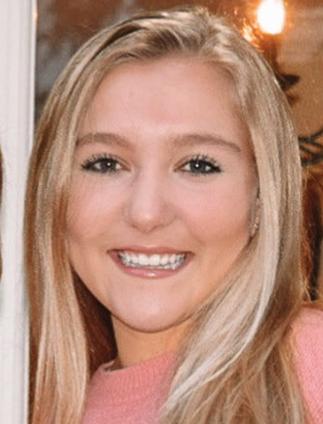








40 • PADUCAH LIFE IMAGINE THE DIFFERENCE 4-7 POINTS CAN MAKE. JUST ASK THESE STUDENTS. Marshall
English • Math • Reading • Science Reasoning • Writing and More! 270-554-4111 www.educate.com ACT® is a registered trademark of ACT, Inc. ACT PREP! ACT Prep for December test begins November 6. Advanced Reading Skills class begins late October to work on reading rate. Maximum 6 per class. FREE review after taking initial course.
County
Kate Outland | McCracken County Weston Miller, Ashley Higdon, Daniel Higdon & Ally Hutchins | PTHS Brayden Stroud | Massac County Madison Acuff
Foiling the ★
W Competition
HEN HE WAS SEVEN years old, Philip Dority wanted to be a ninja sword fighter. So his mom signed him up for fencing lessons at the Bluegrass Fencers’ Club in their former hometown of Lexington. Training under Amgad Khazbak, the coach for the U.S. Olympic Fencing Team, and with peers like the 2020 Olympic gold medalist Lee Keifer, Phil built a strong foundation of skills and grit that would not only lead him to a successful college career in the sport, but also carry him through one of the most challenging times in his life so far.
Phil attributes his success in the sport to those early years of learning how to lose and get back up again by training with fencers that were older and stronger than him. “Fencing is special because there’s so much strategy involved. It never just felt like they’re better than me. I really felt that if I could technically figure them out, then I could win, even if they are older and stronger. That thought always provided me with motivation,” Phil comments. Winning a National Championship at age 11, Phil realized that if he continued training and competing seriously then fencing could really take him places.

When it came time to select a college, Notre Dame was at the top of Phil’s list. “The Bluegrass Fencers’ Club just kind of feeds into the Notre Dame fencing team. Since I was 10, it’s been in my head that I wanted to go to Notre Dame. Not only does the school have the biggest team ( about 70 fencers) and the best resources, but there’s also a whole positive community feeling to the team.”
by D IXIE LYNN
OCTOBER/NOVEMBER 2023 • 41
The fencing coaches at Notre Dame recruit people for their skills set but also for their individual perseverance. Practice is every morning, a midday oneon-one session with a coach, and then 2.5 hours of team practice in the afternoon, so it takes a lot of focus and determination— both on and off the strip. “The coaches focus on each player as a person and what’s going on in their lives, which in turn gives us the freedom to focus on fencing since the other parts of our lives are taken care of. There’s always open communication. If you’ve got something going on with school or going on with life, just talk to them and they’ll make sure you give it the proper focus, even if it gets in the way of fencing. At Notre Dame, it’s about your life too, not just the sport.”
Molding young men and women of caliber outside of fencing, the coaches also hold the team to a high academic standard. The culture of the team is to have a high GPA so when they’re not fencing, they’re focusing on academics (Phil’s GPA is 3.95).

In addition to the coaches, the team also hires a former Navy SEAL that helps with their mental game, teaching them how to work together to overcome obstacles and how to hold teammates accountable for the overall success of the team. Fencing can be described as physical chess—it takes a lot of strategy and mental acuity, so Phil says having a Navy SEAL help with training “feels like a secret weapon (no pun intended).”
Even though college fencing is very different from the club fencing he was used to, Phil gained some momentum his freshman year at Notre Dame, making a name for himself. Then the fall semester of his sophomore year he ended up in the hospital for a month with Crohn’s Disease, getting so sick that he eventually had to drop out of his classes. His physical and mental health were at an all-time low. “I won ‘Most Improved’ my freshman year and made all this progress and then I had to just kind of lose it all. That

was really hard. But I was like, there’s really only one way to go from here,” he remembers.
His coaches and team rallied ‘round him, showing emotional support and never giving up on him. Just like the mental fortitude and grit that he trains for on the fencing team, Phil overcame many obstacles, worked on his health, and came back to school the spring semester, taking extra courses to get back on track and graduate on time.
He also went back to the gym as soon as he was able, feeling really out of shape after the hospital stay. “I could barely move or work out without pain. But I wanted to come back and show myself and the coaches that I could still be great,” he recalls. “I just needed a little more time to train.”
Phil finished his sophomore year and kept working out and training all summer, heading into his junior year feeling stronger. One of his coaches suggested he also get back into tournaments and college competitions to continue building back his stamina, so he spent nearly every weekend traveling to compete. Even though he lost many of those bouts, he started building back some momentum, which ultimately led to the Atlantic Coast Conference (ACC) at Boston College in March of 2023.
42 • PADUCAH LIFE
Phil Dority scores a point during the ACC Individual Championship finals at Boston College.
Phil describes the ACC championship finals at Boston College. “I fenced the whole day, kind of terrified because to fence in the finals you have to lose almost zero bouts. I ended up having the best record for all the schools, for all the weapons, leading into the finals. I only lost one bout and the person I lost to was the person I had to fence for the finals. I wasn’t sure what I could do differently to beat him,” he says. But after a talk with the team’s Navy SEAL consultant Phil felt mentally ready for the championship bout. “I was so locked in by the time I started, and even though the score was sometimes close, it never felt like I was going to lose. So, when I won it felt more like I’m showing everyone else what I can do more than showing myself.” The ACC finals also happened to be near his birthday so winning the championship felt like both a wonderful gift and quite the pinnacle to a challenging 18 months.
“Performing pretty poorly at the college competitions and then to come back and win the ACCs really defined my year,” he happily comments. On top of being champion, Phil was also named the ACC 2023 Men’s Fencing Scholar-Athlete of the Year.

Phil is looking forward to his senior year and the next fencing season at Notre Dame. Studying political science, he plans to enter law school next fall and eventually seek a career in healthcare law. Even though he’s not sure he’ll keep up with fencing after college, he’ll always carry the life lessons he’s learned from the sport: with hard work and true grit anything is possible.
Phil Dority is the son of Dr. Jeremy and Abby Dority.







OCTOBER/NOVEMBER 2023 • 43
FOLLOW us on @paducahlife NOW ACCEPTING NEW PATIENTS! CALL TO SCHEDULE AN APPOINTMENT: 2005 Broadway, Paducah, KY 42001 SparrowFM.com (270) 366-7650 (270) 366-7650
C M Y CM MY CY CMY K SparrowFM_PaducahLife_4.75x7.25_Fall2023.pdf 1 9/5/23 11:40 AM
Sparrow
Family
Medicine
was founded
in partnership with Dr.
Ryan Frazine
of Advanced Internal Medicine with the goal of providing comprehensive healthcare services to western Kentucky. Dr. Mittendorf is joined by Deanna Stallons, MA and Katlyn Wiley, MA. The team brings a wealth of knowledge and expertise in family practice, ensuring that you receive comprehensive healthcare tailored to your specific requirements.
by S USIE F ENWICK


Let the Good Times Roll in the Kitchen


Anita Granier Draws On Her International Culinary Heritage to Make Her WKCTC Cooking Classes a Tasty Blend of Styles And Flavors

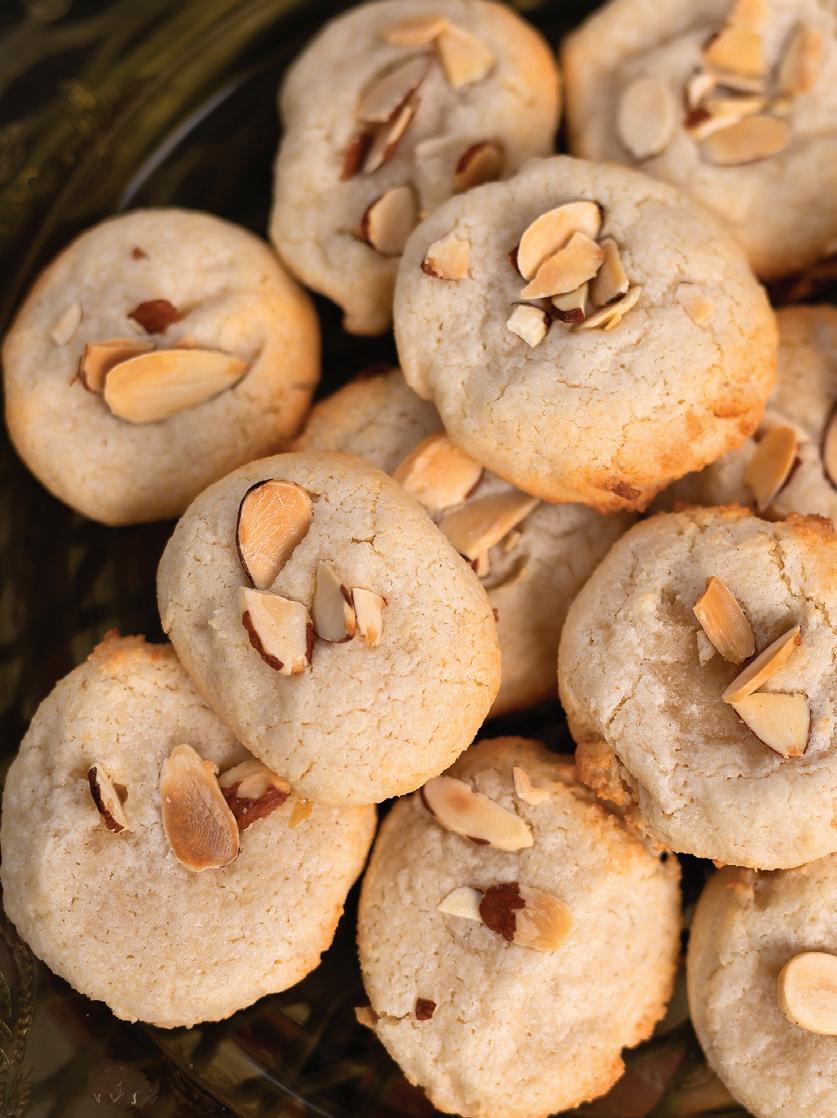

ANITA GRANIER HAILS FROM LOUISIANA, the land of beignets, pralines, and gumbo. The joyful French Cajun expression, laissez les bons temp rouler, rings through the air as the enticing aroma of good things to eat dances to memories of her father’s Sunday accordion serenades and floats on long-ago sounds of the laughter of siblings gathered in their mother’s kitchen preparing Sunday dinner.
Anita left her beloved LaPlace, LA located halfway between Lafayette and New Orleans and also left behind everyone she knew save her husband, Hayward, and her two sons, 5-year-old, Jude, and 3-year-old Evan. Anita moved to Mayfield, KY 36 years ago relocating to accommodate her husband’s career. Far away from her home in the deep south, the familiar Cajun phrase of letting the good times roll took on maybe a teeny bit less colorful western Kentucky translation, but with exactly the same fervor. Anita Granier was determined to keep it flowing
44 • PADUCAH LIFE
★

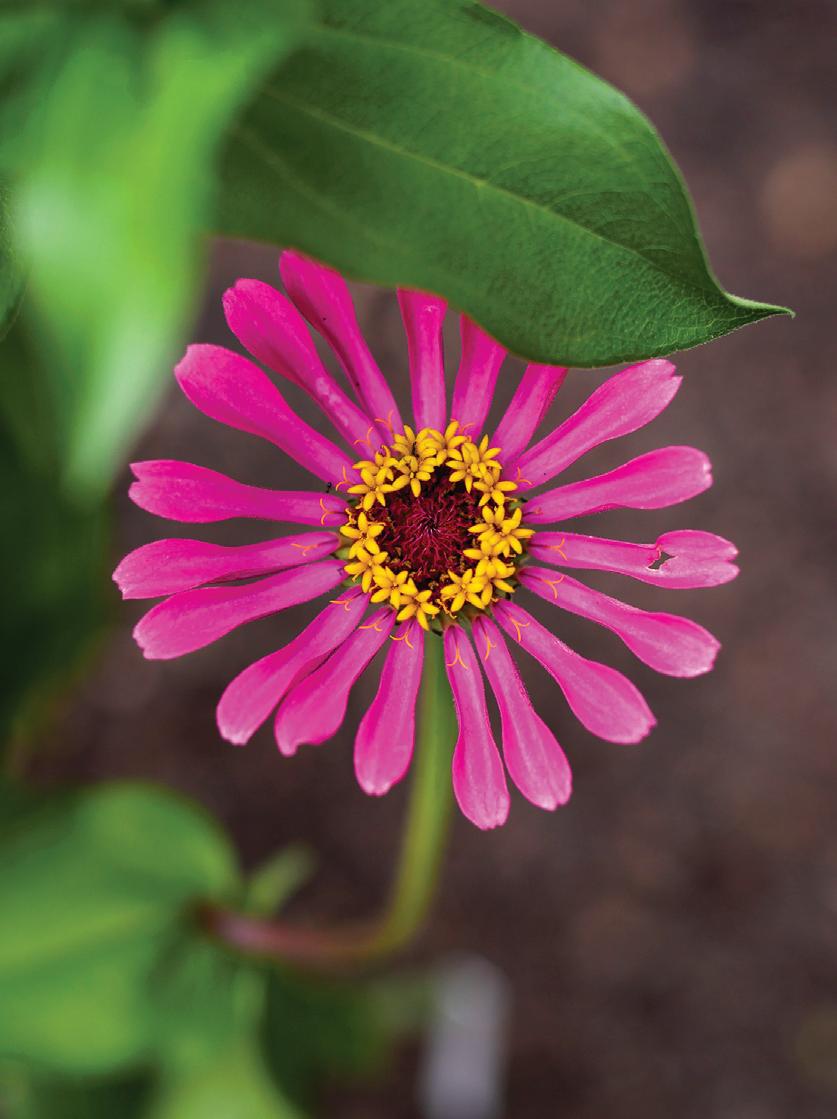


















AnitaGrainer
through her culinary veins and in every bubbling pot of rich, thick gumbo. She stirred up thoughts of fun and family in each recipe of fragrant etouffee, and she poured out her childhood culinary roots in puddles of sweet, golden pralines. Laughingly, Anita says upon waking each morning, “First I evaluate what hurts, then I start thinking about what I’ll cook that day.”
She’s not your typical western Kentucky cook with a repertoire of fried chicken, green beans, and corn on the cob. She cannot recall ever cooking a pot roast or a chicken pot pie. Kentucky’s white gravy confounds her because of its origins in an underutilization of the magical combination of fat and flour. She’s from the land of deep, dark roux just a couple of seconds away from burnt that yields complexity to dishes of her homeland. Anita revels in drawing from her Italian heritage and incorporating her husband’s French ancestry into delicious meals that are in themselves celebrations. Anita enjoys her family life and her family life always involves cooking and experimenting with different cultural foods. Beneficiaries of Anita’s passion for cooking include the additions of Jude’s wife, Caitlin, and their two children and Evan’s wife, Kristin, and their two children. She loves to garden which led her to create an extensive herb garden to satisfy the need for fresh herbs for her cooking needs. “When I hear someone say they hate to cook, I can’t even fathom that, because I love it so much,” marvels Anita.
Anita’s solid base of culinary skills gained from her Italian mother and grandmother and French mother-inlaw was broadened by engaging in cooking classes abroad. While husband, Hayward, enjoyed outings to Italian museums, Anita spent her time taking cooking classes and learning the best of what regional cooks had to offer. She found the key to many wonderful Italian dishes was the freshness of the ingredients. They cooked what was available in season and the results were delicious, healthy, fresh dishes enjoyed in a festive celebratory mood with each meal being an occasion.
After retiring in 2011 from the Mayfield Independent School System as Director of Public Relations and Media Instructor, Anita was approached by Kevin O’Neill at West Kentucky Technical and Community College about teaching through the school’s outreach program for Workforce Solutions. Kevin’s first question to Anita was, “What can you cook?” Anita’s reply was, “What do you want?”
Kevin was presented with an impressive list of dishes for adult cooking classes including chicken and andouille
jambalaya, chicken and andouille gumbo, pasta dishes starring pasta made from scratch, and many, many more. Desserts and other specialties included homemade marshmallows, orange marmalade cheese tarts, cream puffs, olive salad, and muffulettas, homemade almond biscotti, and a host of other delectable treats.
Anita has drawn quite a following of foodies since she began sharing her culinary craft through the college’s adult cooking classes. Her most recent classes were held at the new Graves County Cooperative Extension Services Office in its state-of-the-art kitchen designed with education in mind. Marketing classes as “Simply Anita,” three separate classes were filled up within one week of announcing them. Eager students were taught how to make ravioli from scratch, homemade gelato, muffulettas with homemade olive salad along with other signature sandwiches, cream puffs (both sweet and savory), amoretti cookies, and puff pastry fruit rings. Icing on the cake was to enjoy the fruits of their labor while socializing after the cooking concluded.
Complaints are many but very consistent in regard to Anita Granier’s classes. The complaint: classes fill up too quickly leaving many aspiring cooks frustrated because they missed an opportunity to learn from one of the region’s uniquely capable culinary artists.

Laissez les bons temp rouler may be the mantra in the kitchen of outgoing, energetic, upbeat Anita Granier, but being “Simply Anita” underscores her sincere desire to make her class experiences simply delicious.

46 • PADUCAH LIFE
ANITA’S“TAKE YOUR LUNCH”TIPS











The key to any lunch for kids is a colorful variety, says Anita Granier. “The eyes quickly choose what kids eat,” she believes. “I truly believe that food presentation is vital.” Consequently, packed school lunches can be healthy and fun. Of course, peanut butter and jelly sandwiches are all-time lunch favorites, but including hummus with mini carrots and celery can be healthy sides to the sandwich staple.
One of Anita’s favorite lunch entrees is chicken meatballs. They can be served with marinara sauce or honey mustard and they include just a few ingredients.

Chicken Meatballs
1 lb. ground chicken
¾ cup Italian breadcrumbs
½ cup shredded carrots
½ cup shredded Parmesan
1 egg













Mix together, form the meatballs, and bake until golden brown at 350 degree for about 30 minutes.
Anita also likes the idea of wraps for lunch entrees. “Almost any filling can be a wrap,” she says. “You can use chicken salad or ham and cheese, or any number of vegetables and condiments. Fruit is always a sweet treat.” A variety of bread selections is also a suggestion to break up the day-to-day delivery of a school lunch. “You can choose different breads for sandwiches or wraps or you can take a few minutes and cut out some fun shapes to break from the same old, same old! And who doesn’t love some prosciutto wrapped around a cheese stick?” Anita also suggests perking up your Greek yogurt with some fruit and a dash of cinnamon or honey as a savory dip with dill and lemon juice. “And packing it all up together the night before gets your child involved in the selection and the prep,” Anita adds.
OCTOBER/NOVEMBER 2023 • 47
“I may live in the big
now,
Life
3000 Broadway | 444-3996 | midtownmarket.com PROUD TO CONTINUE TH E TRADITION OF SMALL TOWN CUSTOMER SERVICE!
city
but Paducah
is the best city life magazine I’ve ever seen!” – Syd Rodocker Nashville, Tennessee











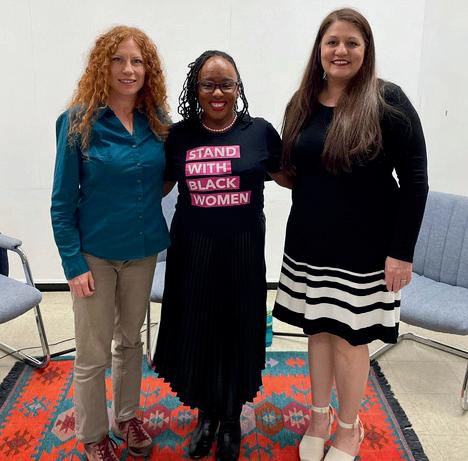




48 • PADUCAH LIFE 100 SOUTH 4TH ST, SUITE 400 PADUCAH, KY 42001 270.448.8888 | KKHBLAW.COM Visit our website by scanning the QR code Thomas J. Keuler | James A. Sigler | David L. Kelly | Theodore S. Hutchins Stacey A. Blankenship | Kristen N. Krueger | R. Brent Vasseur | Lesley A. Owen James P. Landry | M. Jared Sigler | Jacob R. Blankenship | David K. Homra | James T. Skinner C M Y CM MY CY CMY K KKHB_General-PadLifead-7.25"x6.75[9-1-23]".pdf 1 9/1/23 9:37 AM Soundslike Home Home Greetings from your home for public radio! News Conversations Community Arts Music
Karen Black Finding
by Amanda Hutchison H
IN 1974, FOURTEEN-YEARold local artist Diane Bay went to the movie theater. She saw Francis Ford Coppola’s The Great Gatsby that starred some of the biggest names in Hollywood. It was not until 2012, at 52 years old, she would discover that one of those stars was her mother.
Diane was adopted as a baby in Illinois. She had known since she was four that she had been adopted and longed for years to know who her birth mother was. When Illinois opened up their sealed records, Diane finally had the opportunity to find her birth mother’s identify.
To her surprise, her biological mother was Karen Black, an actress particularly wellknown in the 1960s and 70s. Her filmography includes Easy Rider, Five Easy Pieces,The Great Gatsby, and Airport 1975.

In her 2022 memoir, Finding Karen Black: Roots Become Wings, Diane chronicles her experience from learning of her adoption

to spending time with Karen as her daughter and her caregiver for several weeks. Diane and Karen would only have one year together. Karen was battling cancer when they discovered each other. Diane tells her story in an honest and reflective style. She grapples with conflicting feelings of abandonment as a baby and finding her biological mother’s love, which she had always craved knowing. “There were so many serendipitous moments and emotional moments,” she says. “It was such a really good and unique story that I felt I needed to tell it.
“It took me 10 years to come out with my story,” Diane shares. “My book was actually published on the 10-year anniversary of us finding each other. I started journaling my experiences during the year that we met so I could keep track of everything that happened,” Diane explains.“Quite a few of my friends said that I
Diane Bay’s quest to find her birth mother took her from the glamor of Hollywood to the pages of her memoir
OCTOBER/NOVEMBER 2023 • 49
Karen Black in The Gunfight starring Johnny Cash and Kirk Douglas in 1971.
Experiential Shopping

Industrial • Paddywax Candles and Apothecary

Open Tues 1-5 / Wed-Sat 10-5
Follow us on Instagram & Facebook

“There were so many serendipitous moments and emotional moments. It was such a really good and unique story that I felt I needed to tell it.”
THE SOUTH’S BEST SL 2021
- Diane Bay
•
•
• Antiques • Vintage
Garden • Architectural
11TH & JEFFERSON
Finding Karen Black
should write the story down. 10,000 words in I realized I could actually make this a book.”

Diane had studied creative writing in college but had no experience writing and publishing a book. “I had one literary agent interested at one point, but that did not work out,” Diane shares. “I did not want to go through with having someone making changes to my work. I wanted to tell the story that was in my heart, so I self-published the book.”
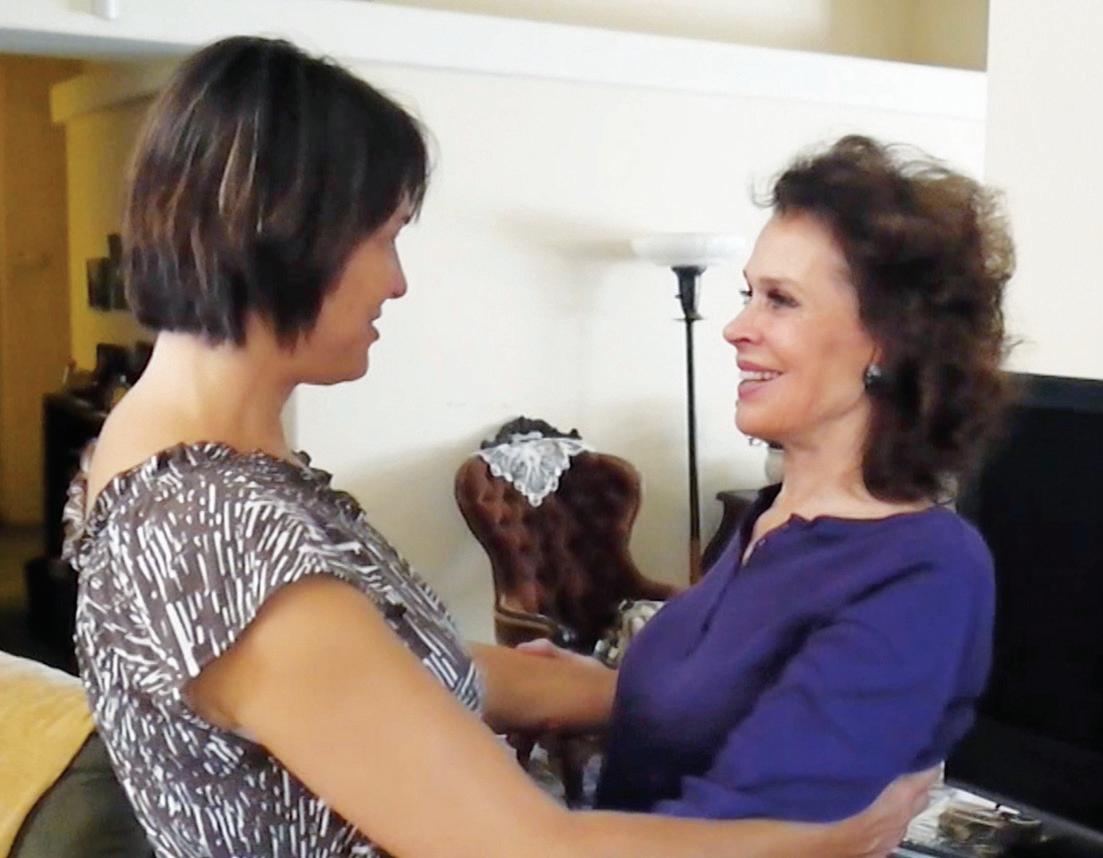
Diane had always had a creative spirit. In her book she recalls the first time she learned the magic of painting from a couple who had a cabin at the lake, where she and her family vacationed. “William’s hands made music as he swept paint onto the dappled paper with deft strokes. A sunset appeared as if by magic. He used each brush a different way: a large flat one to blend the sky, a small pointed one to create trees and sailboats. I was keen to try it myself.” She learned that she came from a long line of creative souls. During the year she and Karen had together, she also met her biological father, Robert Benedetti, a three-time Emmy and Peabody Award-winning producer. She learned of a grandmother who was a writer as well.
Diane is a visual artist and member of the Paducah Area Painters Alliance (PAPA) Gallery. She first joined in 2011and has been a very active member since 2016. “I’ve been working on an overarching theme that’s a connection between my art and my book—it is this connection to our history,” Diane explains. “I didn’t know where I came from or how I fit into humanity. Karen’s brother, Peter, is a genealogist. He connected me to generations of people. I find it not only fascinating but also very fulfilling. I really like a painting I just did of two barns because of its nostalgic feel. That’s what I am trying to get to in my art.”
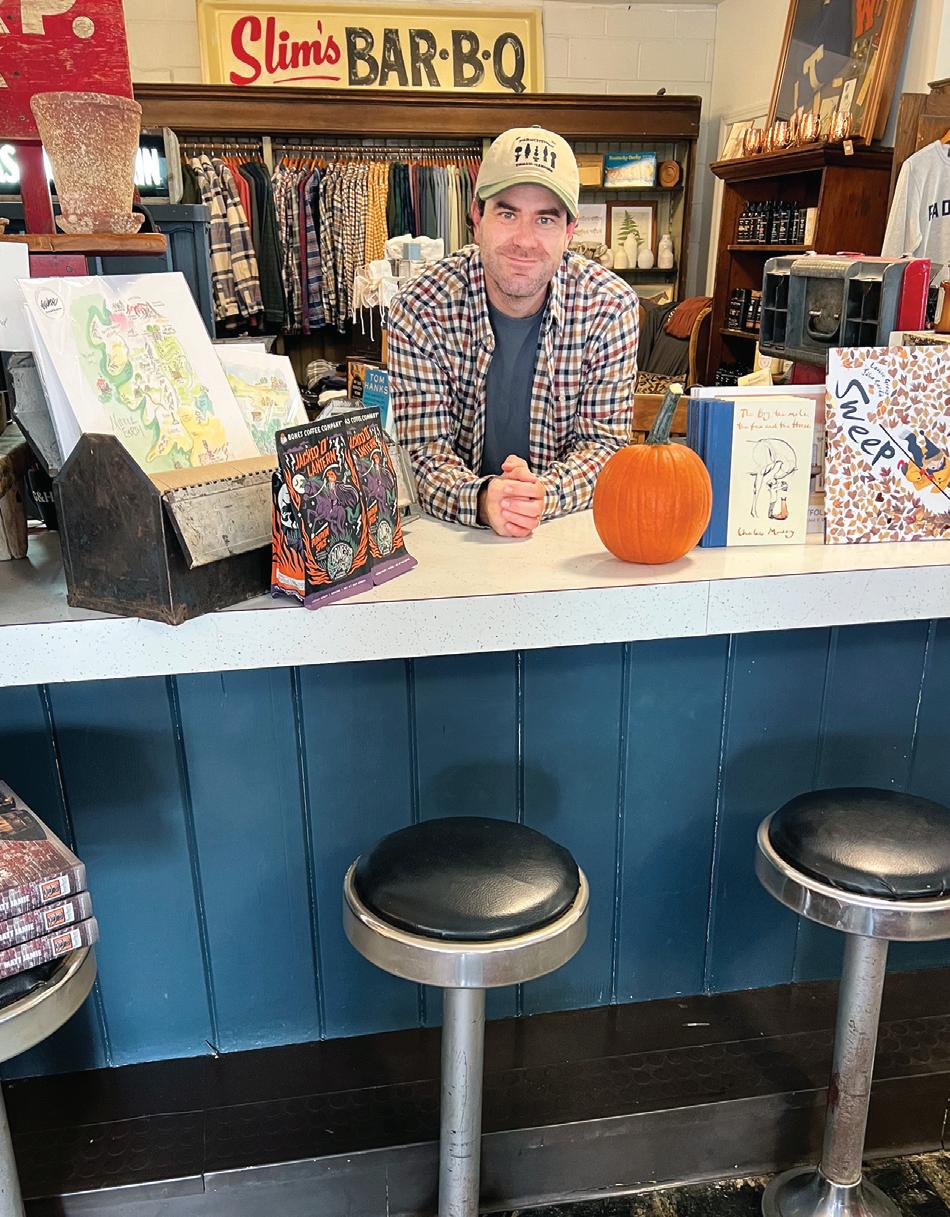
Diane’s book was a finalist for N.N. Light’s 2022 Memoir of the Year. Despite the praise she has received, Diane does not first and foremost consider herself a writer. Currently she has found joy working on her oil paintings. Diane’s work can be seen on display at the PAPA Gallery on Broadway. Her book and an audio version are currently available for purchase on Amazon.

• Normal Brand Clothing • Gentleman’s Hardware Apothecary • Hazel Village • Baby Lit Primers • Rie Paper • Pappy & Company • Winter Water Factory Baby Clothes • Books • Vintage Home Goods • Bourbon Barrel Foods • Gift Baskets! 125 N. 11TH STREET Follow us on Instagram & Facebook THE SOUTH’S BEST SL 2021
Diane meting Karen for the first time.
The to a
KEY Long Life is a Busy Life
by Amy Sullivan
A
LMOST 94 AND 91, BUDDY AND Glenda Duke thrive on hard work and a devotion to artistry.

Natives of Sikeston, Missouri, Arthur A. (“Buddy”) and Glenda Duke were introduced by a friend of Buddy’s. His wife was Glenda’s piano teacher so they say music was KEY to their life together! They moved to Paducah 52 years ago for Buddy’s job with ServiceMas ter.
Three daughters, 12 grandchildren, and 25 great grandchildren later, Buddy now has a second nickname, “Dad-o!” Most of his children and grandchildren still live in the Paducah area, and Buddy and Glenda now reside at The Lakes where they stay busy with friends and family visits, painting, and Glenda’s piano performances.
“I started painting when I was 53,
because I enjoyed pictures,” remarked Buddy. “I didn’t take any lessons; I just like to paint. I don’t claim to be an artist.” But there is no doubt that everyone around him considers Buddy an artist, as his art adorns the assorted areas of The Lakes, from their living quarters, down the hallways, and into the dining area. All who enter enjoy viewing outdoor scenes of barns, trees, birds, cows, horses, flowers and churches.
“I don’t do too many faces or people. They’re harder to do,” says Buddy. “I mostly paint from a photo or picture and then add what I can imagine in my mind. You learn as you go. If I make a mistake, I just cover it up with something else. Even regular artists do that.”
He tried oil at the beginning of his creative hobby, but quickly learned it was hard to work with. Watercolors are his preferred medium, easy to use, clean up, and put
Buddy and Glenda Duke say their love for art and music and each other have kept them happy and healthy for more than 90 years
52 • PADUCAH LIFE
up when finished. Buddy only had one art class his entire life, where he painted a nice rose, he says. He considers himself entirely self-taught. Though many are hung at The Lakes, some of Buddy’s watercolors reside in folders waiting to be framed. “A lady came in the other day and laid a $100 bill on the table,” says Buddy, “but I didn’t want to take her money. I don’t advertise that I give them away, but I think it’s a good way to share with other people. I gave away some that hung in my room and I need to replace them. The ones hanging in our rooms are my favorites.”
Buddy tries to paint a little every day and enjoys creating at his table in his kitchen. He never has been an outdoor artist, though the scenes he paints are primarily outside scenes. Once he chooses a focal image, he then adds in other elements like fences, trees, lakes, and branches, which he has “in his head.”
Wife Glenda adds that



OCTOBER/NOVEMBER 2023 • 53
Public Schools Salute Doug Van F leet Thank you for your dedication to music eduation!
Paducah
Buddy and Glenda Duke
Buddy cuts the size of the photo down in order to get a cheaper frame. Frames are the only thing Buddy pays for, as his daughters bring watercolor supplies to him periodically. He either gives away his unframed paintings or frames one when it’s time to replace a painting he gifted to someone.



Aside from art, Buddy is a talented writer who has published about 200 poems as well as 200 gospel songs (music and lyrics) with eight different companies. Glenda has helped in this endeavor, as she has delivered the joy of music to those around her for 75 years playing piano and organ for churches including Southland Baptist Temple for 27 years. Currently, she plays for The Lakes every Wednesday and Sunday before lunch.
“When we first moved here, there were several ministers who visited and gave Sunday School lessons,” Glenda noted. “I told Bud I didn’t want to suggest a service since there are all denominations here, but I thought they might enjoy a hymn sing. Every Sunday morning, we play for about 20 minutes and get in about seven or eight songs. I play and Buddy sings.”
Buddy is a former choir director and sings solos, and he and Glenda were once part of a quartet and attended many conventions. She plays and Buddy sings the Happy Birthday song for all the residents on their birthdays. Glenda proudly plays pieces from memory often. “When you have played as long as I have, you just know them,” she said.

Although their church offered to come pick them up each week to attend services, Glenda decided she would rather be at The Lakes and bring her joyful gospel gifts to her co-residents. “If I don’t play for them, some of these people probably won’t get a dose of it every week like we do,” she said, “and even if they don’t always get to come to the room or they are visiting while we are singing and playing, we know they are enjoying it and hearing it throughout the building. The beautiful Steinway piano is nice and loud. I try to play it quietly but I can’t, so I am glad everyone can hear it.”
Even though they worked regular jobs, Bud with ServiceMaster and Glenda as a business manager for a physician group, music has been central throughout the couple’s life. At times the quartet performed somewhere different every night. “We weren’t of the elite set,” Glenda remarked. “We worked hard. We would go to some churches and sing and they would
pay us, but we gave it back.”

Buddy was a bass singer in the quartet. Glenda says he still has his stage voice and can get up and sing anywhere. Though this past year he has had a little more trouble singing and his voice is not as strong as it once was. Buddy jokes, “There’s no competition here!” And anytime he wants to sing, Glenda can play any key up or down to meet him where he is. Their daughters gifted their dad a portable speaker and microphone to help amplify his voice alongside the piano at The Lakes.

Buddy keeps his mind sharp by writing poems, working crossword puzzles, and reading his bilingual Bible in Spanish and English. He even learned to sing Have a Little Talk with Jesus in Spanish with the help of a group of Cuban friends.
“Everybody likes to do something, and this is what I like to do,” Buddy concluded. “We enjoy a real busy life together,” Glenda agreed.

OCTOBER/NOVEMBER 2023 • 55 M A G A Z I N E Give the Gift of LIFE! Give a subscription to PADUCAH LIFE Magazine. It’s a gift that lasts all year! Visit paducahlife.com or email darlene@paducahlife.com
Dr. Reed is an accomplished equestrian and a talented cellist with a minor in music from UofL. We can’t promise that she’ll perform a concert for you in the office, but we CAN promise that you will love her compassionate approach and welcome her dental expertise!




56 • PADUCAH LIFE 809 JOE CLIFTON DRIVE • 270.442.0751• BIKEWORLDKY.COM BUY WHERE YOU RIDE! For more than 35 years, BikeWorld has been promoting the development and maintenance of safe places to ride! To support their efforts AND to get yourself one fabulous bike and the gear to go with it, SHOP at one of Paducah’s most trusted small businesses! Then go out there and RIDE! 130 Lone Oak Road • 270 44 3.9099 • broadwaydentalcarepaducah.com Broadway Dental Welcomes Dr. Allison Reed Broadway Dental welcomes Dr. Allison Reed to the team. Dr. Reed is a Paducah native. She is a graduate of the University of Louisvile School of Dentistry and completed her Advanced Education in General Dentistry (AEGD) at Eastern Carolina University.
Broadway Dental Care
THE YAKET Y SAX-OPHONIST
Paducah-Born saxophonist

Boots Randolph is remembered by his friend and mentee, Mike Shannon
Hby Amanda Hutchison
THE SONG HAS BEEN AROUND FOR DECADES.
Depending on your generation, you may remember it as a Billboard Hit of 1963, the closing song at the end of every BennyHill episode, or a silly song that is in the background of many recorded antics. The song’s name is “Yakety Sax” and it was composed by James Q “Spider” Rich and Paducah native Boots Randolph.
Saxophonist Mike Shannon sat down with PADUCAH LIFE Magazine to discuss who Boots was and what he meant to jazz music. Mike was a friend and mentee of Boots Randolph. They recorded several albums together and in 1998, Mike interviewed Boots for a music technique book called Boots Randolph’s Rock and Roll Sax. “Boots is a very underrated musician and a fine guy,” Shannon recalls.

“I played clarinet in my school band,” Mike said. “I remember my father and my brother-in-law,
both musicians, taking me down to Nashville to see Boots play for the first time. I tried to model my career after his. He was a big influence in my life.”
Boots Randolph, whose birth name was Homer Louis Randolph, was born in Paducah in 1927 and grew up in a musical family in Cadiz, Kentucky. Every member of his family played multiple instruments and the family often listened to the Grand Ole Opry together.
“My father liked more modern
Mike Shannon
OCTOBER/NOVEMBER 2023 • 57
Rock and Roll Saxophone, by Boots Randolph and Mike Shannon
music,” Boots shared in the 1998 interview with Mike. “The big bands and standards; Broadway and vaudeville tunes. Because of him, we kids experimented in music other than country, the basic three-chord tunes that we already knew,”
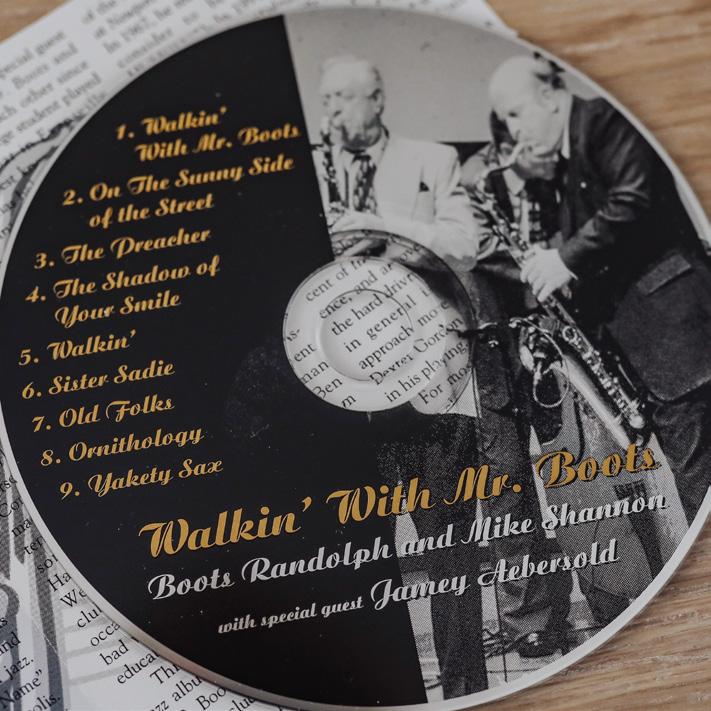
Boots was able to join the Trigg County High School Band as a seventh grader. He learned to read music with the band. He started on the baritone horn and then switched to the trombone. “My dad swapped an old rusty pistol for that trombone,” he recalled in the interview, “figuring it was better to have some musical instruments than a pistol—so we wouldn’t shoot ourselves.”
The summer before his junior year, Boots picked up the saxophone and fell in love with it. He started playing in nightclubs, dropping his marching band duties. His older brother, Bob, who was studying music in college taught him music theory and techniques. In his spare time, Boots would listen to the records of the great tenor saxophonists of the time. He fell in love with jazz listening to Dizzy Gillespie and Charlie Parker.
Boots was drafted into World War II in 1946. He was stationed in Camp Lee, Virginia in the 329th Army Service Band.He was then transferred
to Kilmer, New Jersey where he played for the arriving troops on Staten Island. Boots spent time on 52nd Street in New York City listening to live jazz.
After the Army, Boots played with a band based in Decatur, Illinois. His “Yakety Sax” song was inspired by the saxophone solo in the 1958 Coaster’s song, “Yakety Yak.”“A saxophone player by the name of King Curtis played on that record,” Boots shared in 1998. “He played a kind of staccato, bluesy, funky style on that record.” He eventually moved down to Nashville and signed with RCA Records.

In Nashville Boots was with a group of musicians known as the “Nashville

58 • PADUCAH LIFE
Boots Randolph
Cats” or the “A Team.” This group included Elvis Presley, Harold Bradley, Hank Garland, Floyd Cramer and Buddy Harman.


At RCA, Boots recorded with Elvis Presley. Among one of his best-known saxophone solos was in Elvis’s song, “Reconsider Baby.” He can also be heard in “Like a Baby,”“I Feel so Bad” and “Such a Night.”“Elvis was a unique man, he had a unique talent,” Boots reminisced. “His personality was a little bashful or shy when I first met him. Elvis had talent. He wasn’t a great singer. I don’t even know if he was a good singer. He got to a song and gave a good reading on it.” Boots also played with Roy Orbison and Brenda Lee among many others. “There weren’t many saxophone players in Nashville at the time.” Mike shares. “He used to joke he was the most famous hillbilly saxophone player in the world.” He went on to run his own night club in in Nashville’s Printer’s Alley until he was about 70 years old.
“Boots was an entertainer. A really funny guy. Often he was on the Tonight Show and the Jackie Gleason Show,” Mikes recalls. “He was a comedian, but I knew him as a soulful and excellent musician.”

Boots was inducted into the Kentucky Music Hall of Fame in 2004. Boots Randolph passed away in 2007, but his music lives on, especially in the memories of his friend Mike Shanon.


OCTOBER/NOVEMBER 2023 • 59
darlene@paducahlife.com KNOW your AD is SEEN and READ! ★ City M n INCE 1990 FEBRUARY/MARCH 2023 NEMOWin Hlea thca r e
The average magazine reader spends 45 minutes reading each issue! To advertise email







60 • PADUCAH LIFE GET GEARED UP FOR THE HUNTINGSEASON! Find great selections of guns, gear, supplies, clothing, boots, and outdoor accessories beyond your expectations. Get geared up for all the fall hunting seasons at Shooter’s Supply, Paducah’s outdoor emporium PADUCAHSHOOTERS.COM • 270.443.37 JOIN WEST KENTUCKY COMMUNITY AND TECHNICAL COLLEGE in celebration of: OCTOBER 17: The renaming of WKCTC’s Allied Health Building OCTOBER 19: WKCTC’s 20th anniversary as a consolidated college 5 p.m. - 7 p.m. • Allied Health Building
President Emeritus Dr.
janett.blythe@kctcs.edu
6. 5 p.m. - 7 p.m. • Student Center The evening
local
and the
of
20 years. The
d’oeuvres
kathy.mchaney@kctcs.edu
6. WKCTC is an equal educational and employment opportunity institution.
The building will be renamed in honor of WKCTC
Barbara M. Veazey. In addition, the Donor Appreciation Wall for the $3.6 million Healthcare COUNTS campaign will be unveiled. The public is welcomed. Hors d’oeuvres will be served. RSVP to
by October
will include
musicians
sharing
stories, fellowship and memories of the college’s last
public is welcomed. Hors
will be served. RSVP to
by October
Dr. Barbara M. Veazey
by D ARLENE M AZZONE
A Frog, a Toad, and the Award-Winning Artistry of Mark Evitts ★
An Alum of the Tilghman Band of Blue is Now the Musical Mind Behind a New Animated Series Streaming On Apple TV+


OCTOBER/NOVEMBER 2023 • 61
★
Photo Courtesy Jessica Amerson Photography
FROG AND TOAD ARE BEST friends, with slightly different viewpoints. Frog likes new adventures. Toad likes the comforts of home. But despite their contrasting characteristics, their mutual adventures are simply not complete without a backdrop of tunes that illuminate not only their personalities but their happy travails as two travelers on the road of LIFE.
Those songs and tunes are aptly provided by Paducah native, Tilghman graduate, composer, and musician Mark Evitts.
Based on the beloved books by Arnold Lobel, Frog and Toad is a new Apple TV+ animated series. And the uplifting, zippy little scores that provide the accompaniment to the two amphibians’ storylines have been created by the talented composer and performer Mark Evitts.

For years now Mark has stamped an indelible imprint on Nashville with his ingenious instrumental creativity and his ability to make big sound come from a small studio

nestled in historic Franklin. Having toured as a fiddle, mandolin, guitar, and piano player with such artists as Rodney Atkins, Jimmy Wayne, Dillon Hodges, Bo Bice and others, Mark became one of the foremost session string arranger/violinists around town.
In 2013, Mark created a string and children’s choir arrangement for the Grammy Award-winning pop rock group Train’s New Year’s Eve Time Square performance of John Lennon’s “Imagine.” And his string arrangement for the original song “Voice In A Dream” for NBC’s hit show “SMASH” was nominated for an Emmy. More recent song writing credits include co-writing Nas’ single “Brunch on Sundays,” which he also performed on, from the Grammynominated album “King’s Disease II” and The Game’s single “Violence.” As a multi-instrumentalist, Mark has performed on prestigious stages worldwide, including The Grand Ole Opry and Carnegie Hall.
But it was the work with Rodney Atkins that really propelled Mark into a different stratosphere of music-making. “I started making so many contacts through that volume of work with Rodney that I began getting calls from a wide range of music producers for everything from a tour with Brooks and Dunn and ZZ Top to working on some
films and TV shows,” he says.

“I found myself thrown into a world I would never have imagined,” Mark recalls. That world expanded exponentially after a collaboration with the likes of Alex Geringas, the composer for a show called Arlo the Alligator Boy.
“In 2019, I decided to come off the road and focus on composing for film and TV,” says Mark. “My son was part of the equation. I wanted to be home more to be a more available father. But I also found myself working almost as much behind the scenes on composition as I was on executing stage performances. I started by just taking my computer in my backpack and within a few months, I realized I was toting around half of my studio and then it hit me. Writing and composing is what I want my life to be.”
So, Mark started pitching his prowess to potential film and TV contacts and pretty soon there came a reply. “These people didn’t know where I was. I’m sure many just figured I was in LA,’” he surmises. “So, when I got a call from Alex Geringas asking if I could meet for coffee, I just said, sure, like I was down the street!”
Mark booked a flight, strolled into the coffee shop, picked up his mug, and began a conversation which would take him to heights of composition
62 • PADUCAH LIFE
F
he had never dreamed of.

“We started talking and, at some point, I realized I was boring MYSELF, and I figured I was not exciting Alex either,” Mark laughs. “At that moment I decided that I needed to be ME. And I told Alex that I was basically a fiddle player from Paducah, Kentucky and that I really wanted to compose music for projects like his.’”
Mark says at that moment, Alex’s eyes opened wide and he pulled out his computer and started explaining a new show he was working on called Arlo the Alligator Boy. Mark ended up writing a number of scenes for Alligator Boy, which, with an introduction by Alex, led to Mark building the score for Frog and Toad’s TV friendship.
“When I got the call to send a demo of a song to Rob Hoegee, the showrunner for ‘Frog and Toad,’ I knew I was entering a world where the competition is on another plane,” Mark says. “And then it happened. I got the call to work on songs and music for the show and there was discussion about a meeting. As it happened, I was headed to New Orleans for a family trip and, believe it or not, Rob was going to be in the city that very same week.” Mark and his new colleague wound up sitting on their balconies listening to street music and devising the sounds that would underscore the antics of Frog and Toad.
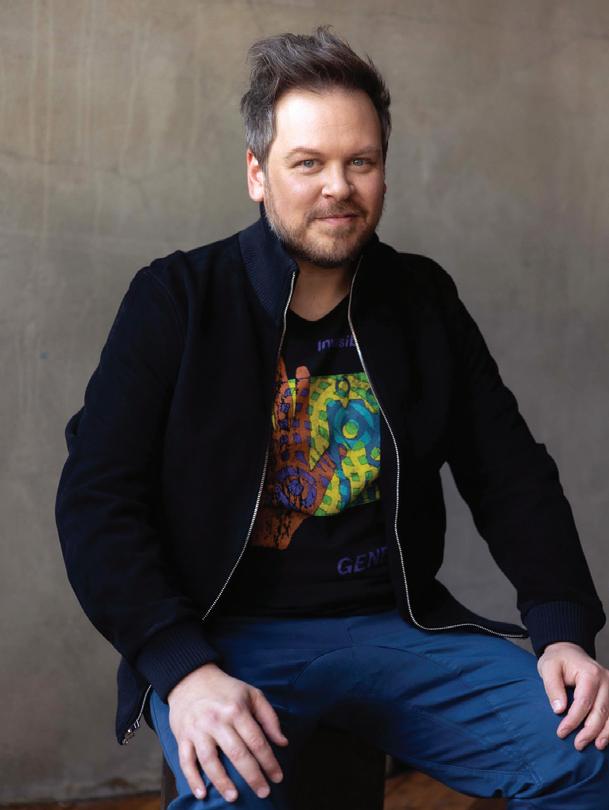
“I knew from the beginning what I was looking for,” Mark explains. “As a young musician in Paducah, I had many times heard Dr. Ted Borodofsky’s Dixieland band and I knew that should be a part of the mix.” Ted is a long-time local musician and a retired ophthalmologist. “I wanted these pieces to be a blend of everything I know in my heart— where I’m from, what I know.
Essentially, I think of it as a Paducah sound. It’s a hybrid of bluegrass, Dixieland, folk, jazz, riverboat— it’s kind of a cauldron of everything Paducah is to music.”

And now the “sound” of Paducah is the very essence of the bouncy, bucolic scripts being performed by the likes of Tom Kenny (voice of SpongeBob SquarePants), Margaret Cho, John Hodgman and many other well-known Hollywood actors on Frog and Toad.
“This has been the best gig of my life,” says Mark. “It’s been an incredible experience. I’m working with some of the best animators in the industry and some of the most talented people in this business. Hearing Tom Kenny sing my song is just beyond belief. There have been more than a few times when I have thought to myself—what is happening here? How did I end up here?”
And yet the answer to those selfimposed questions is unquestionably that HERE is where Mark Evitts most certainly belongs.
“I just want to tell stories with my music and my songwriting,” Mark explains. “I think the time has come that I can now acknowledge that this is what I’m supposed to be doing.”
OCTOBER/NOVEMBER 2023 • 63
Photo Courtesy Jessica Amerson Photography
by A MY S ULLIVAN
A Family Tradition for Paducah’s Vlach Brothers

The Massachusetts Maritime Academy
NOT ONE, NOT TWO, BUT THREE BROTHERS FROM Paducah are making the Massachusetts Maritime Academy, one of the most prestigious maritime institutes in the country, a family tradition rooted in discipline, leadership, and knowledge.
In August 2023 twin brothers Owen and Ryder Vlach joined their older brother, Hunter, second class cadet now in his third year, as cadet candidates at the Massachusetts Maritime Academy.
Located on Taylor’s Point in Buzzard’s Bay near Cape Cod in southeast Massachusetts, the Academy is surrounded on three sides by water. The public university, established in 1891, is focused on maritime-related fields and is the second oldest of six state maritime academies in the United States.
Josef, father of the Vlach brothers, has worked over 28 years in the industry, setting an example and inspiring his sons to follow in his Merchant Mariner footsteps. All his jobs have been based out of Paducah, and he is currently Vice President of Compliance and Emergency Management at James Marine.
“From the time I could work, I’ve been helping my dad on the river, and I fell in love with it,” says Hunter, McCracken County High School class of 2021. Now a junior, he is majoring in marine engineering preparing to sail “blue water” on larger ocean-going vessels like tankers and container ships that can handle the open ocean. Upon graduation he will earn his Bachelor of Science and U.S. Coast Guard license, becoming an assistant engineer licensed for Unlimited HP/Unlimited tonnage in motors, internal combustion, gas turbine, and steam turbine operations and propulsion.
When Josef attended an International Work Boat Show near New Orleans in 2020, he visited a Massachusetts Maritime Academy booth and told his oldest son about it. Hunter considered all of the merchant marine academies in the U.S. before narrowing his choices to three—Texas A&M, SUNY, and Massachusetts Maritime—all of which he was accepted to. Since Mass Maritime also offered football, a sport he had played most of his life, he opted to enroll there to play for the Buccaneers as linebacker #38.
Class of 2023 McCracken County High School graduates Owen and Ryder also attribute their aquatic affection to their father.

★
64 • PADUCAH LIFE
Twin brothers Owen and Ryder Vlach
“We learned a lot from him and saw him advance in his career, and we look forward to having endless opportunities for growth in the industry like he has,” said Ryder. Owen added, “And with the Academy’s success rate, we will be able to do just about anything.” Besides the availability of wellpaying jobs in this field, Owen says there is “no denying that transportation by water will never die, and that was one of the reasons I chose the Massachusetts Academy.” The school has a rate of 85% career placement within 90 days of graduation (non-licensed graduates), and 100% employment for those who are licensed.



Ryder will study international maritime business, planning to earn his master’s degree and prepare for a shore-side management position in the industry, while Owen will be going into marine transportation, a more hands-on area, like his older brother Hunter. Owen will pilot boats and focus on navigation, whereas Hunter will work in the engineering department on the systems industry side.
The brothers selected the school because of its mix of academics and hands-on learning for their majors. “That’s one of the best things,” Ryder commented. “The three different majors we have chosen incorporate a combination of all aspects of the field. We all would like to come back to Paducah at some point and hopefully work with our dad to contribute to the industry in our home town. With the combined knowledge of the four of us, we can start a business if we want, or we could basically do anything—the options and opportunities are endless.”
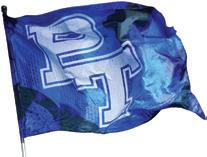
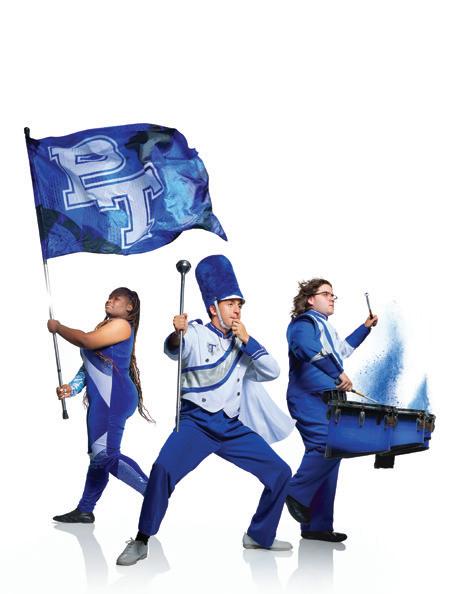

OCTOBER/NOVEMBER 2023 • 65
Get Paducah Life delivered to your door six times a year! Subscribe online at paducahlife.com OCTOBER/NOVEMBER BAND BLUE 19282023 of SUBSCRIBE TODAY! 270.519.1573 • trchomeinspection.com Licensed and Insured KY HI#103477 Receive a $50 Promot ional Discount For Your Home Inspec t ion Good on basic inspection with home purchase. Limit one discount per client.
The Academy is truly a brotherhood/sisterhood, Hunter explains. “It’s heavily based on discipline. Time management is everything,” he said, “and they preach it from day one as soon as you step on campus.” On a typical day at Massachusetts Maritime, underclassmen wake up at 0530 (5:30 am) to prepare for room inspections. Beds must be made, all clothes folded, no dust present, uniforms ironed and hung with perfect creases, clothing in drawers folded nice and neatly, and students must meet all grooming standards. Morning formation begins at 0700 to gather accountability, make sure the cadettes are awake, on time, and dressed in the uniform of the day. Classes run 0800 to 1600 hours, and football practice begins at 1630 and goes on until dinner. Study hours are from 2000 to 2200 at which time “Taps” is played to say goodnight. Cadettes go back to their rooms and get ready for the next day when it all begins again.


Weekends are structured differently. For freshmen, “liberty” (time off) starts after their last class on Friday until 1700 hours Sunday night. Upperclassmen have liberty from Friday until Monday at 0700 for morning formation. The majority of students are from around the area and are able to visit home on the weekends. The Vlachs, however, being 20 hours from home, can’t often do that. Hunter has enjoyed accompanying his buddies who live closer to the school. “Everyone has taken me in and I have a lot of respect for my teammates,” he said. “They have included me and made me feel welcome and at home.” He has no doubt Owen and Ryder will experience the same thing with their class’s cadette camaraderie.

66 • PADUCAH LIFE
FRESH FALL FARE! 270.349.8416 532 N. 32nd Street Paducah, KY We’re here to help you start planning for those wonderful holidays ahead. There are so many unique options for all your fresh and festive events! LET US DO THE CATERING! You enjoy the party.
Owen and Ryder have joined their brother, Hunter, at the Massachuesetts Maritime Academy
Entertaining holiday season?
As freshmen, the twins will be required to reside on the floor of their respective company. They are permitted there, the dining hall, and in certain stairwells only. Though the three brothers will be separated during the weekdays, they will reunite on the weekends with Hunter.









Proud mother Brandi Vlach, although sad that her boys are far away, rests easy knowing they are all together and there for each other. “I am very excited about the opportunities they will have and the things they will learn,” she said. “I couldn’t ask for a better place for them to be.”

“All you have to do is take a leap,” Hunter added. “In four years, you’ll be out to help your community. Paducah is a major river hub, and the industry is so important to our community and can do so much for you. I would like to bring my experience back home to help my community.”
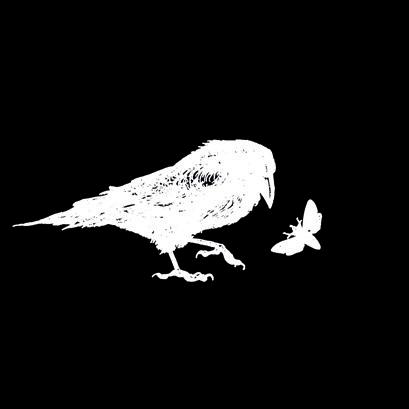




OCTOBER/NOVEMBER 2023 • 67
TrouttOldTimeGeneralStoreAndMarket.com HARVEST FESTIVAL
12-14 CHRISTMAS OPEN HOUSE
2-4 SHOP LOCAL SATURDAY
25 COME SHOP & CELEBRATE AT TROUTT GENERAL STORE! Raven & Moth
www.ravenandmoth.com
October
November
November
313 Broadway Street in Downtown Paducah
LastWord the
THE SOUND OF FALL captures the essence of autumn’s beauty through a musical vessel resting amidst the season’s warm palette. The artist, moved by her grandson’s violin playing, embarked on a fall photoshoot to immortalize the instrument's spirit. This artwork mirrors the fleeting nature of music and celebrates the intergenerational connection between the artist and her grandson. With each brushstroke, the painting weaves a tale of creativity, love, and the harmony between art and nature, reminding us of the transformative power of both music and familial bonds.

ABOUT THE ARTIST
Paducah native Jenny Fuller is not only a commissioned artist but also a self-published author. Seamlessly weaving her love for art with the magic of storytelling, Jenny has illuminated the pages of five children's books, each a testament to her creative prowess. She has also lent her artistic flair to collaborations with fellow authors, bringing their narratives to life with her illustrations.
68 PADUCAH LIFE
“Music can change the world because it can change people.”
— BONO ★

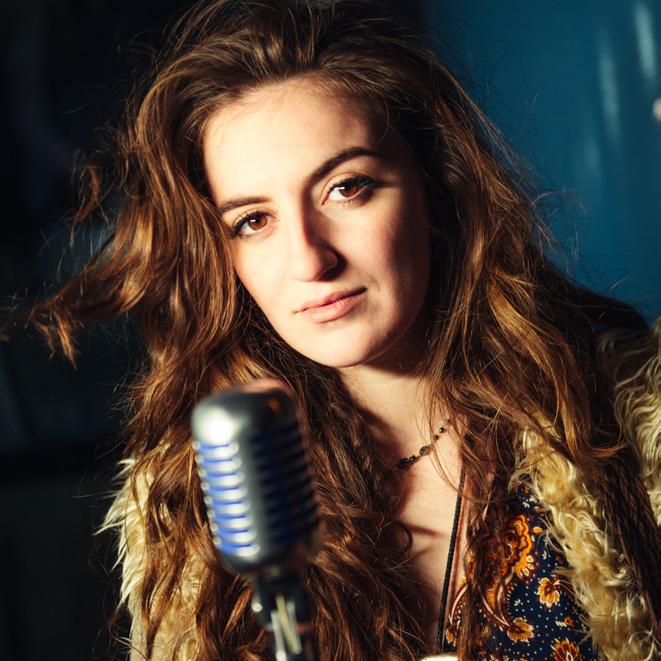





WEST KENTUCKY COMMUNITY AND TECHNICAL COLLEGE WKCTC, a proud member of the Kentucky Community and Technical College System (KCTCS), is an equal educational and employment opportunity institution. Purchase tickets now for our ‘23–24 Season at artsinfocus.org or call 270-534-3212 December 9 Chloe Kimes October 13 JoyCut January 27 Heather Hammers March 2 32 Sounds A Documentary Film March 30 Abe Partridge April 28 Murray State University Commercial Band
TOM CL AYTON Paducah Bank Lender for 30 Years!


For 75 years Paducah Bank has been Paducah’s bank. And for 30 years Tom Clayton has been Paducah’s banker. In an industry where people come and go and go and come, Tom Clayton has stayed—stayed true to his customers a nd stayed at a bank he believes in If you’re looking for a bank you can trust, look for bankers you can tr ust—a banker like Tom Clayton! paducahbank.com

/ MEMBER FDIC

























 by D ARLENE MAZZONE
by D ARLENE MAZZONE









































































 The senior cheerleaders of 1969 decorate a bus dedicated to taming the Tigers!
The senior cheerleaders of 1969 decorate a bus dedicated to taming the Tigers!




























































































































































































